Rarotonga, Cook Islands: Ultimate Travel Guide With the Best Beaches & Things To Do
We stayed for a month to give you all of the best tips for visiting this Polynesian paradiseIn the middle of the Pacific ocean
Rarotonga, the main island of the Cook Islands, is nothing but pure bliss.
We have been to some pretty damn beautiful islands throughout our lucky lives but so far, Rarotonga wins the trophy for best tropical getaway.
And it’s not as expensive to visit the Cook Islands as you might expect. While it’s not really a budget destination, there’s no reason to break the bank here.
Getting around is easy. People are friendly. And all of the best beaches are free to visit for the public.
And did we mention how insanely eye-popping and delicious the water surrounding this little island is?
Scroll down in our travel guide to Rarotonga in the Cook Islands to get to know the best things to do in Rarotonga, the most beautiful beaches, where to eat, where to stay, how to get around the island, our best tips and much more.
Where to stay in Rarotonga:
- Luxury: Te Manava Luxury Villas & Spa or Little Polynesian Resort.
- Value for money: Moana Sands Beachfront Hotel or Muri Beach Club Hotel.
- Budget: Raina Beach Apartments.
Search for the best value accommodation in Rarotonga here.
Table of contents
- Why visit Rarotonga and the Cook Islands
- Rarotonga map and geography
- What to do in Rarotonga
- Areas and beaches
- Where to eat in Rarotonga
- Where to stay in Rarotonga
- How to get around Rarotonga
- How to get to Rarotonga, the Cook Islands
- When to visit Rarotonga and the Cook Islands
- Internet in Rarotonga and the Cook Islands
- Visiting the Cook Islands on a budget
- Safety in Rarotonga and the Cook Islands
- Our best tips for visiting Rarotonga
- What to pack for Rarotonga and the Cook Islands

Why visit Rarotonga and the Cook Islands
If you want to go somewhere exotic and get away from it all and just be, Rarotonga and the Cook Islands is where to go.
Stay in a resort the whole time you’re here and you’ll have an amazing time just enjoying life.
But venturing out into the island is where the real fun happens.
Though there are some beautiful ones, Rarotonga definitely isn’t a resort island; there are no fast-food chains, most beaches are public and there are lots of things going on for locals as well as for tourists year-round.
Also, no building can be taller than the coconut trees by a government mandate.
We’ve heard that the Cook Islands today is Hawaii 50 years ago.
You need to visit the Polynesian paradise at least once in your lifetime and if you don’t believe us, we give the 17 best reasons you should go to the Cook Islands right here.
Pristine beauty
The beauty is mostly pristine and everyone takes care of each other and the environment.
On the one road that wraps around the whole island, the speed limit is 50 km/h (going down to 30 km/h in places) making the pace of it all very leisurely. There are no speed lights and just two roundabouts…
The local culture is vibrant, so if you’re interested in the Polynesian way of life you’ll have plenty of opportunities to get up close with it.
Rarotonga is a pretty small island where you’ll quickly feel at home and ease.
But it’s also big enough to be full of treasures and surprises that are only waiting to be discovered.

A dream come true
Isn’t it amazing how some dreams do come true?
Victoria visited Fiji as a three-year-old and has ever since dreamt intensely of coming back to the South Pacific and what is arguably the definition of tropical islands.
As New Zealand, where we had been for three months, was already quite remote, adding on a trip to the Cook Islands didn’t sound too crazy.
Flights are pretty cheap and it’s less than four hours away from Auckland (about as far away as Sydney, in other words!)
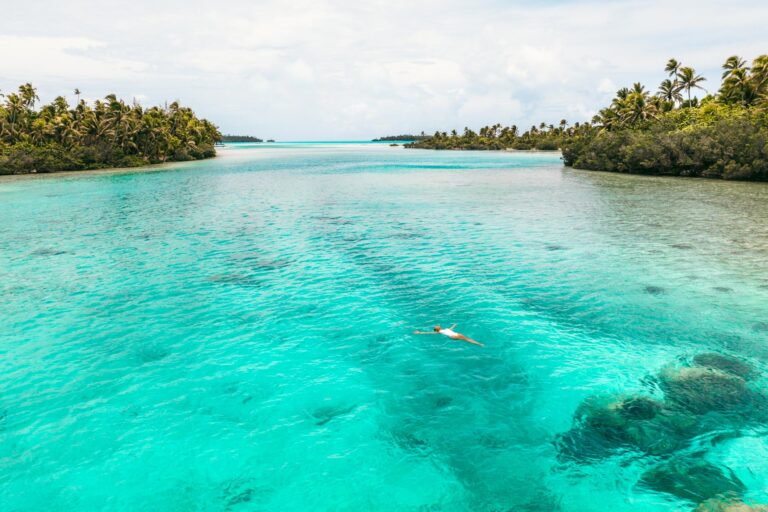
Welcome to Raro
Before we knew it, we landed in Rarotonga in the Cooks.
We were greeted with ukulele music, flower necklaces and palm trees everywhere.
On the ride to our accommodation, we could glimpse the glistening waters and we knew we were in for a treat.
The water surrounding Rarotonga is really something special.
As you’re inside a lagoon, it’s pretty still and shallow. And so saturated with colour that your eyes won’t believe what they see.
We had only just arrived in Rarotonga and the lifelong dream of revisiting paradise had already come true.
Life is full of wonder.

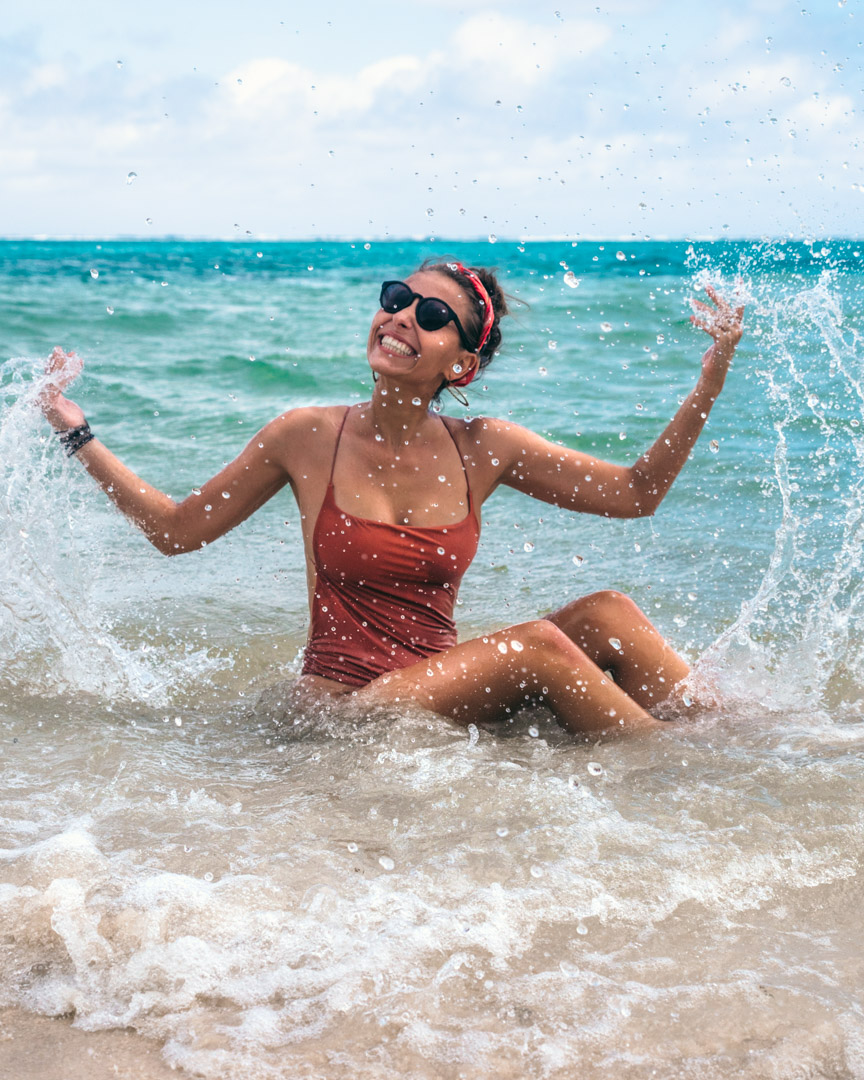
Rarotonga map and geography
Rarotonga is the biggest island of the Cook Islands, which consists of 15 major islands scattered over 2,200,000 km2 (850,000 sq mi) of ocean.
It is in Rarotonga that you will find the nation’s only international airport as well as the Cook Islands’ Parliament buildings.
The interior of Rarotonga is jungle-clad and mountainous.

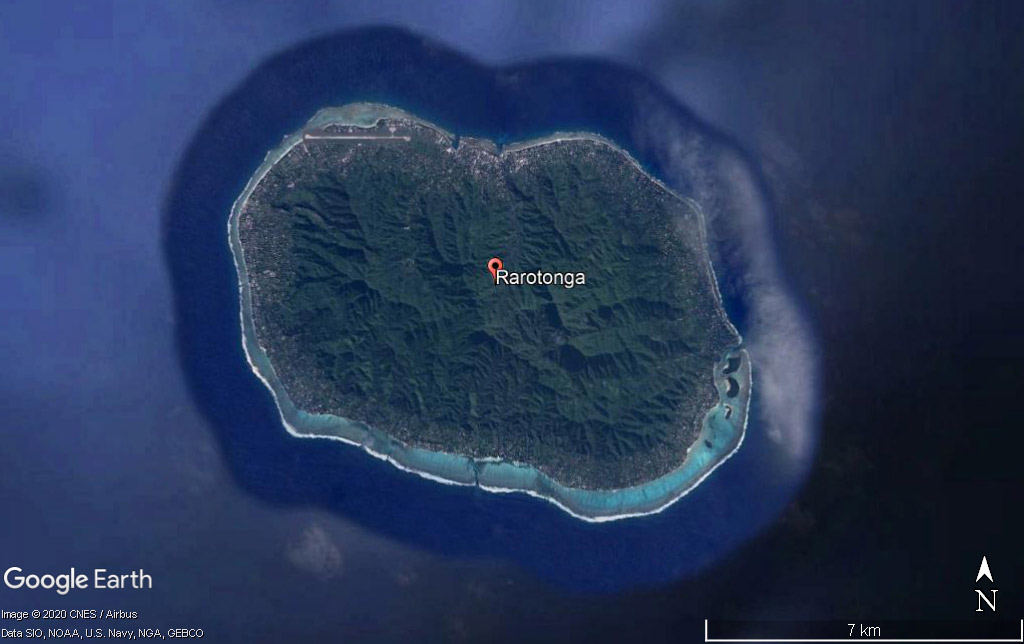
What to do in Rarotonga
Rarotonga is all about relaxing and having fun in the sun.
The most popular thing to do is, of course, to find a sunchair, a hammock or a good spot in the white sand to enjoy the nice weather and breathtaking views.
For an island of its size, Rarotonga packs in an impressive amount of activities, though – for both romantic couples and families.
Read on to see the best things to do in Rarotonga.
Thanks to Cook Islands Tourism for inviting us on a snorkel trip with Snorkel Cook Islands, a Discovery Walking Tour with Tumutoa and an Eco Cycle Tour with Storytellers.
Visit Aitutaki Lagoon (45-minute flight)
If you want to experience something truly special, consider adding a trip to the Aitutaki lagoon to your Rarotonga vacation.
Aitutaki’s lagoon is one of the world’s most beautiful places and it’s just a 45-minute plane ride away with Air Rarotonga.
Day tours depart several times a day and include a tour around the main island of Aitutaki and a lagoon cruise with Vaka cruises that take you to some of the most stunning islands of the lagoon (including legendary One Foot Island) and to snorkelling hot spots where you can get up close with giant trevallies, giant clams and other tropical fish.
We stayed on the island for two nights and can easily recommend an overnight trip to Aitutaki for an even more relaxed pace of life, pristine Pacific living and unreal tropical beauty.
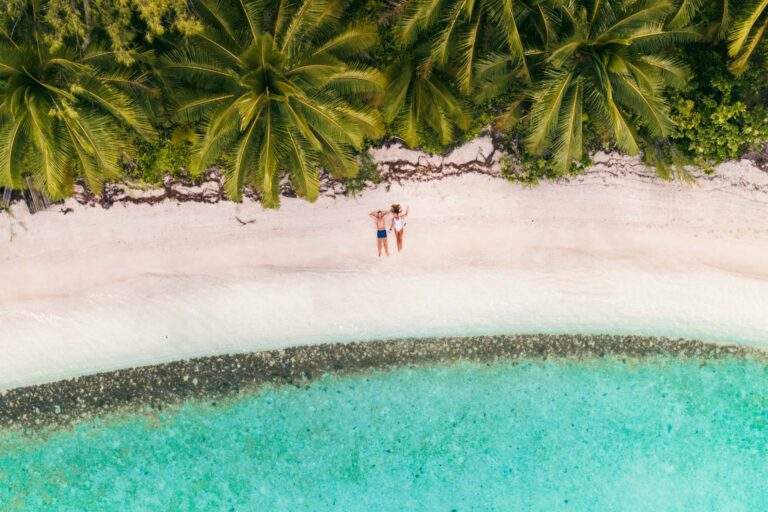

Snorkelling
Want to explore life underwater in Rarotonga? You should!
Rent snorkel equipment and venture out on your own or go on a tour with the pros. They will show you the best places to experience the reef and the marine life around it.
Snorkel Cook Islands
We went on a tour with Snorkel Cook Islands and had an amazing time.
They picked us up from our accommodation, drove us to a beautiful beach, provided reef-safe sunscreen (adlink) and gave us great snorkel equipment (mask and fins).
After a brief instruction, we headed out into the clear blue water and almost immediately we met a gentle turtle swimming up to breathe at the surface. Wow!
During the tour, we saw more turtles than we could count and we even saw some gorgeous eagle rays, blue starfish, a moray eel and lots of fish.
After a lot of swimming, we were served organic fresh fruits and delicious coconuts to drink.
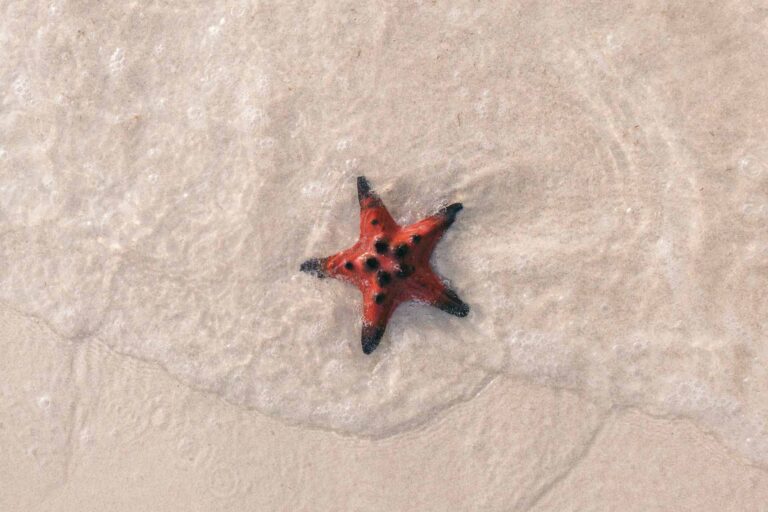

Safety first!
Complementary underwater photos will be uploaded to their Facebook page after the snorkel tour so you can show your family and friends what you have been up to. You can check out the Instagram account for more amazing photos.
The reef snorkel tour is an eco-tour and they only bring small groups of people out.
All the guys are qualified lifeguards so even if you aren’t that comfortable in the water you will feel very safe.
A girl from our group tried snorkelling for the first time and another girl didn’t really like being in the ocean so she was able to hold onto a flotation device the whole time. They both seemed to really enjoy the tour.
All in all, we had a great day and we can truly recommend going with Snorkel Cook Islands on a snorkelling tour.
Pro tip: Make use of the reef-safe sunscreen all over your body (especially the backside and your shoulder!) even though it’s overcast. The sun is strong in the Cooks. Or better yet, wear a t-shirt or a UV-safe shirt while swimming.

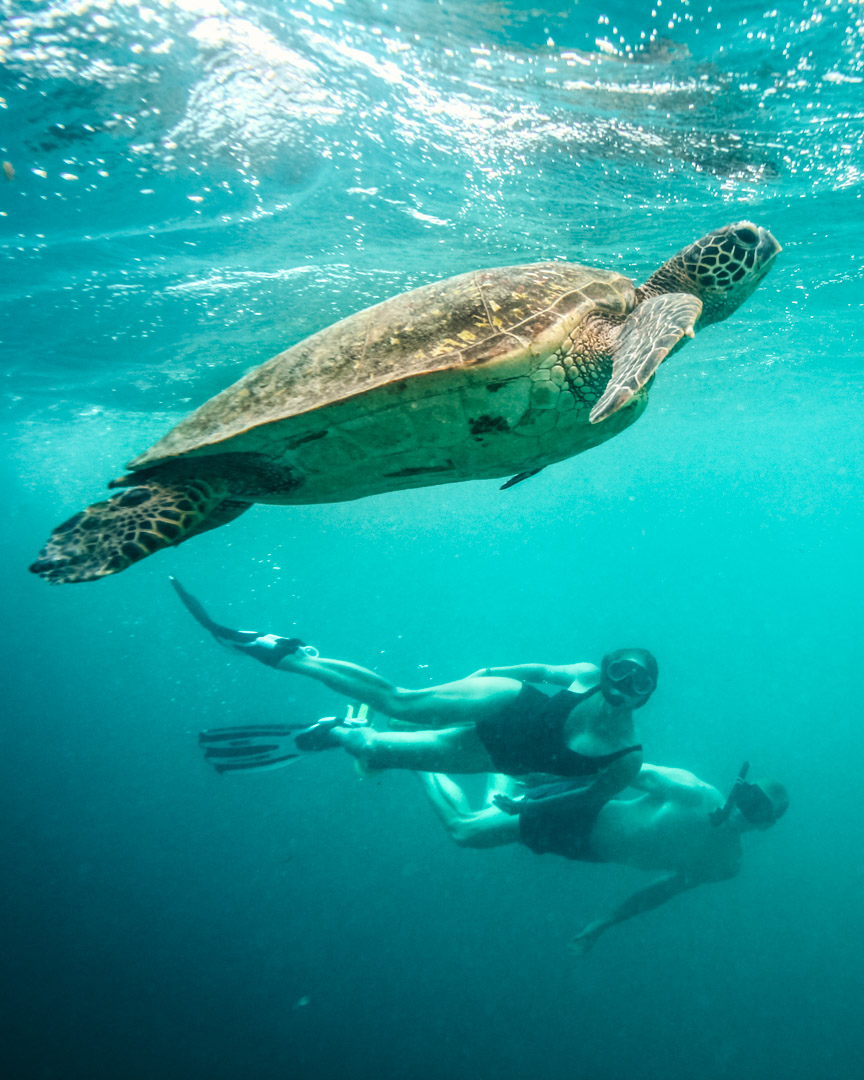
Eco Cycle Tour
If you want to venture around the back roads of Rarotonga while hearing all about the culture, history and local produce, going on a cycling tour with Storytellers is the perfect way to start the day.
The guides are very knowledgeable about pretty much every aspect of Rarotonga and the Cook Islands.
Every tour is customized to fit the needs and wants of the guests.
We visited Black Rock and heard about the local legends. We stopped a few times on the back roads to try fruits that never make it western supermarkets.
We visited a small waterfall, perfect for cooling off after riding in the sun. We walked around a plantation where we tried our hands at opening a coconut and had fresh pineapple.
All with some rather nice casual bike riding in-between.
The tour ended up by the ocean where we could jump in just before lunch was served. Being vegan was no problem at all.



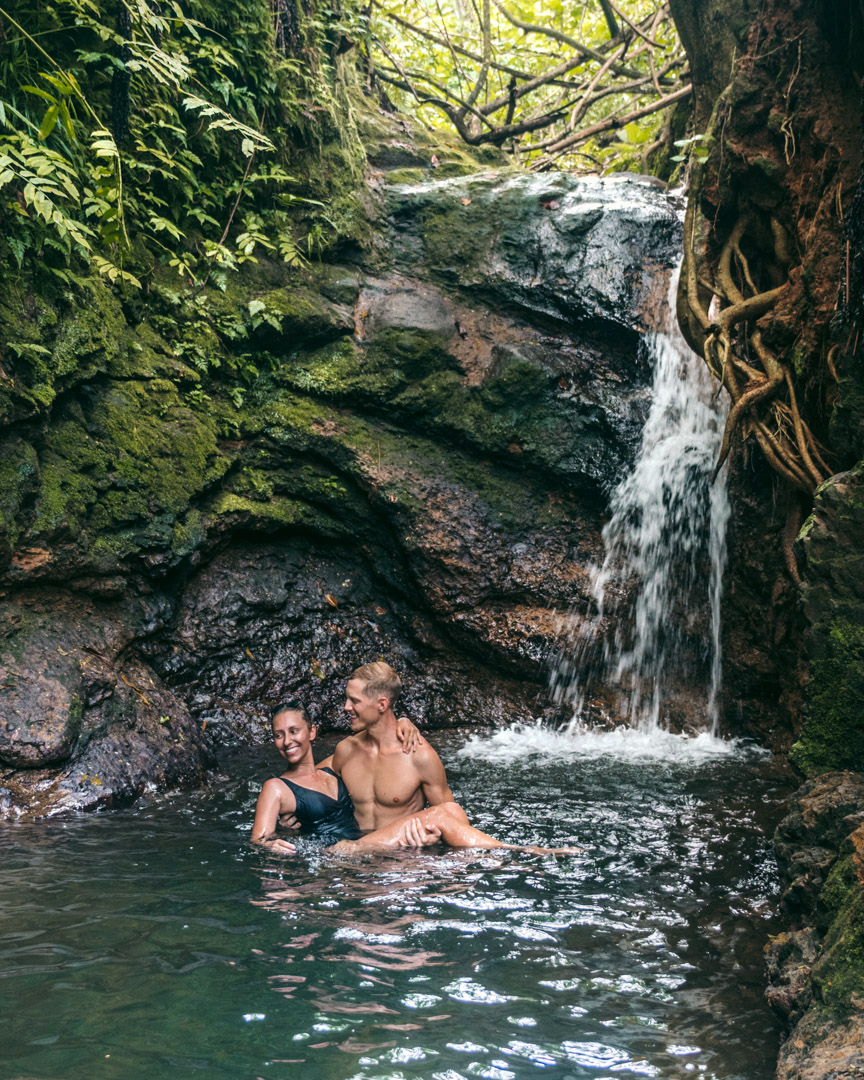
Maire Nui Botanical Gardens
If you can’t get enough of the tropical plant kingdom, pay the Maire Nui Botanical Gardens in Titikaveka a visit.
The rustic garden is full of lushness and it’s a tranquil place for a stroll.
It cost 5 NZD (~ 3.2 USD / 3 EUR) per person to enter in 2020.

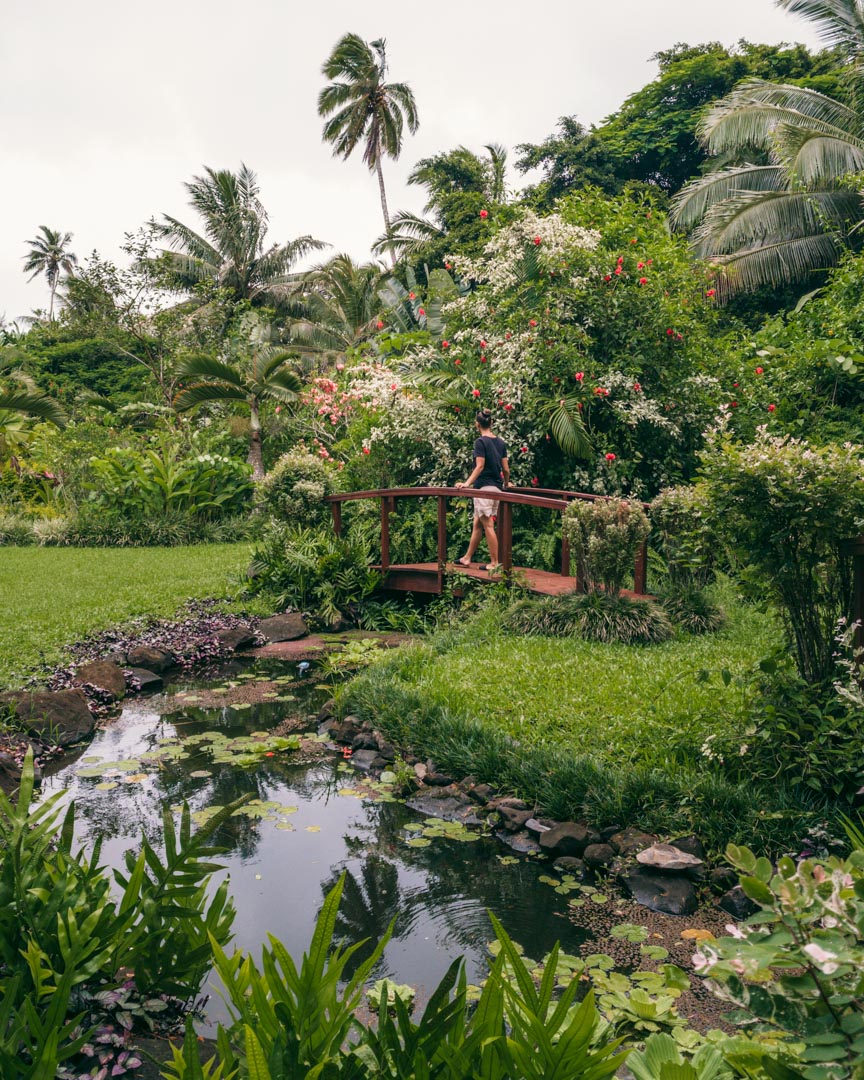
Discovery Walking Tour
If you want to experience the life of the locals in Rarotonga and get a behind the scenes glimpse of what’s going on around the island, go on a Discovery Walking Tour with Tumutoa aka the Coconut Warrior.
During the course of just a few hours you’ll learn everything there is to know about coconuts, the local land laws, Rarotonga culture, family traditions – all while walking around the pleasant back roads and munching on whatever fresh fruits he finds for you.
While we can’t promise the same for you, we even went home with a few passion fruits, avocados and mangos.
Tumutoa is greatly charming and entertaining with lots of storytelling and will make everyone feel welcome in the Cook Islands.
We can imagine that he’s especially good with kids that are keen on learning more about the Pacific way of life.

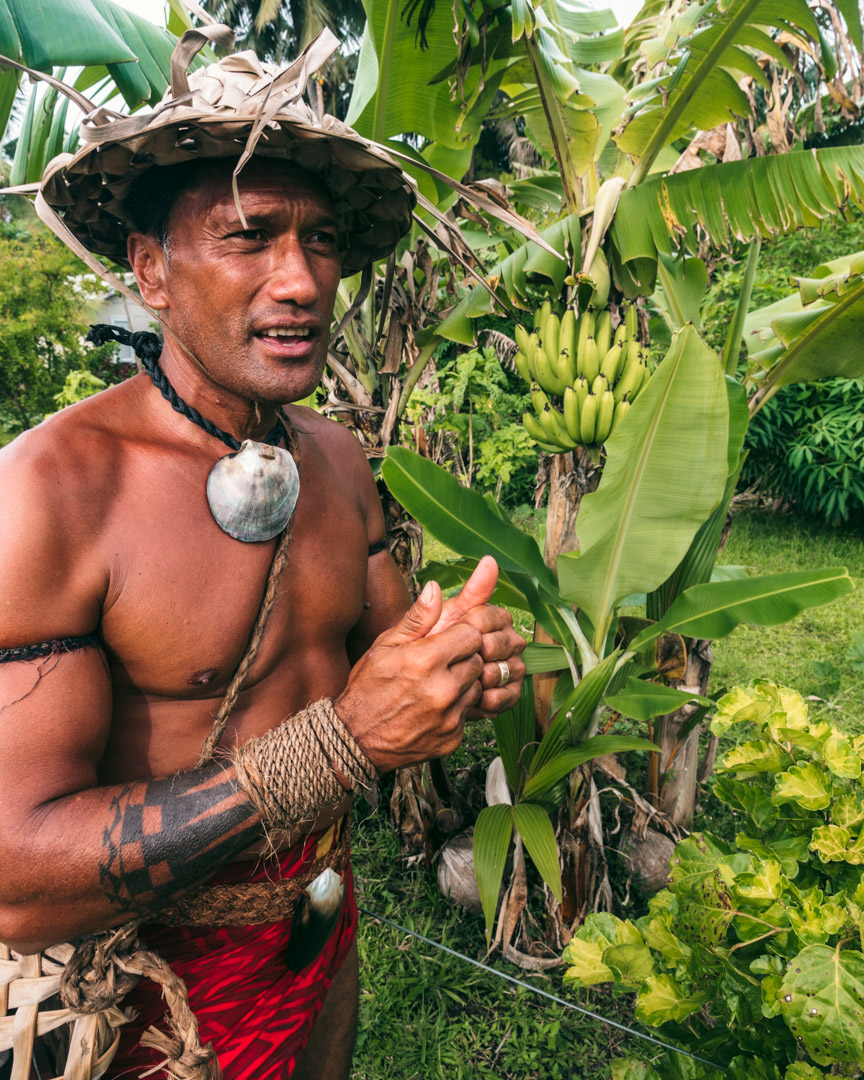

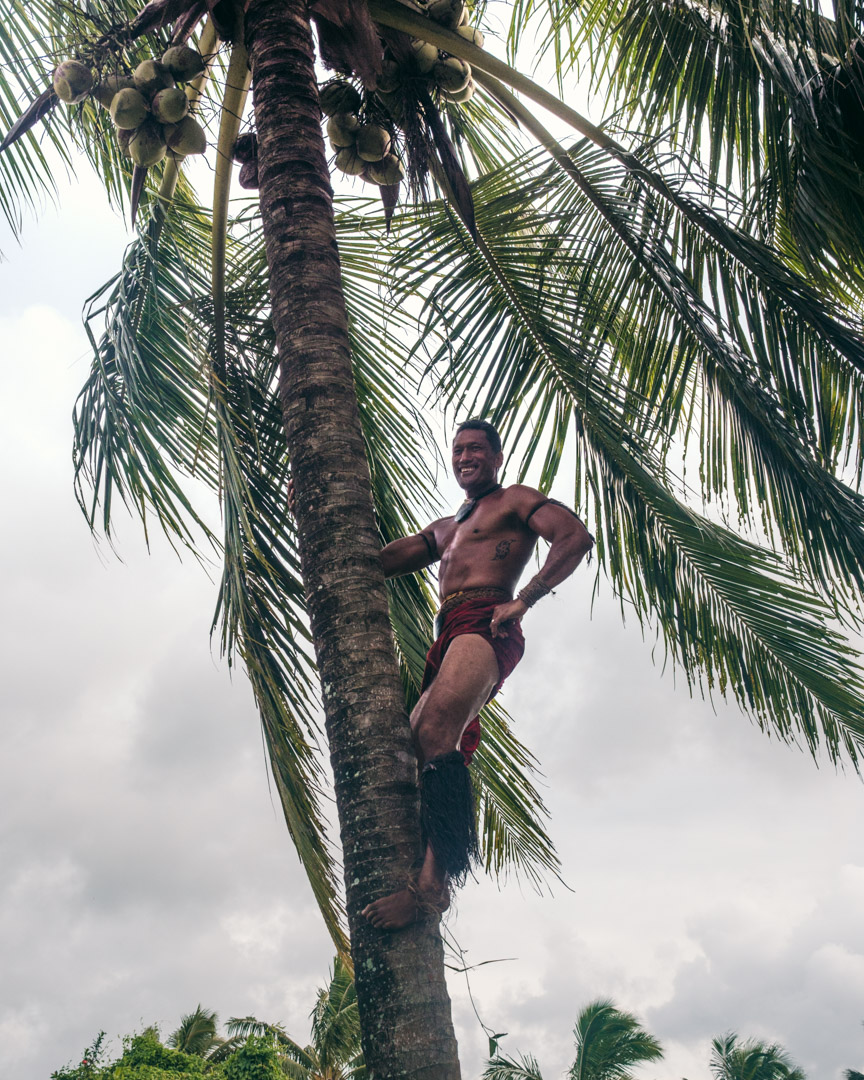
Punanga Nui Market
Every Saturday, the whole island of Rarotonga seems to flock to the Punanga Nui Market to partake in the big event.
For the best shopping, plan to arrive early. Stalls open at around 7 am and close down around midday.
Fresh fruit and veggies are a big drawcard as is coffee, smoothies, handmade souvenirs such as ukuleles, local artworks, handicrafts and flower crowns.
Even if you don’t buy anything, visiting the Punanga Nui Market in Avarua is a fun cultural experience.



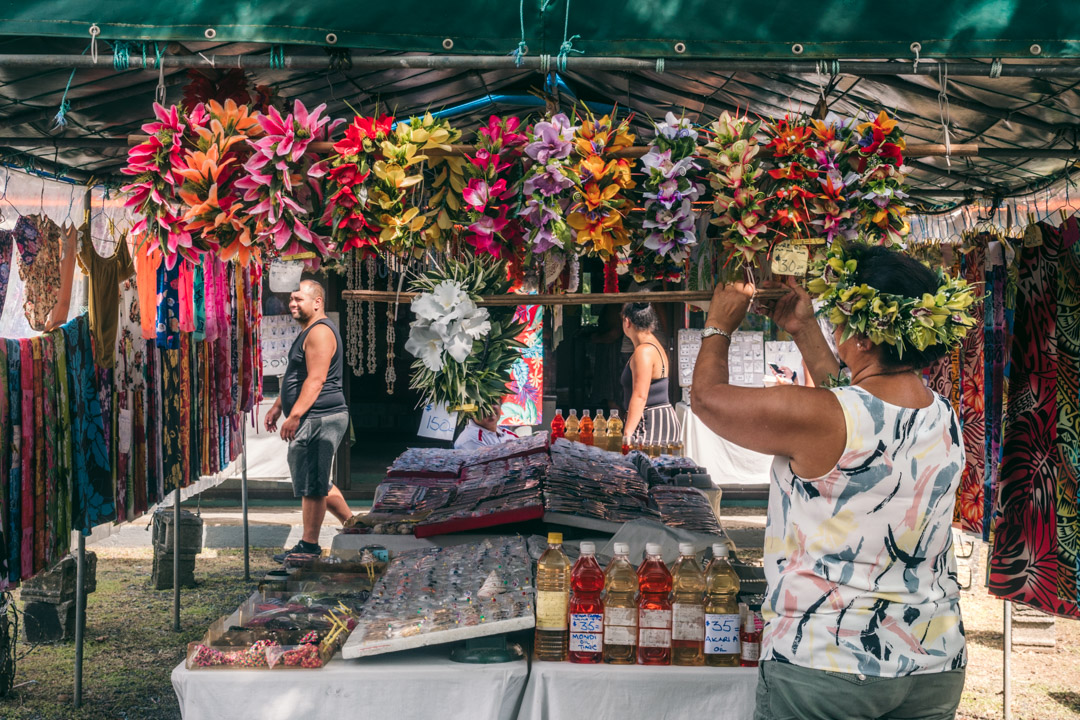
Whale watching from land
From July to October, it’s possible to spot whales (mainly humpbacks) from land in Rarotonga.
One of the best spots for doing so is at the southern “cliffside” of Black Rock which offers a great vantage point.
The west side of Rarotonga is generally the best place to go for whale sightings.
Other places to spot whales from include The Edgewater Resort, Aroa Beach, Avarua Harbour and the Game Fishing Club.
It’s also possible to go on whale watching tours by sea.
Cross Island Trek
If you read anything about the Cook Islands and Rarotonga, it’s very possible that you’ve already heard about the Cross Island Trek with Pa.
While Pa is now retired after having done the trek 5,000 times (!), his nephew Bruce carries the torch across the island to the base of the famed Needle (a nice viewpoint) and to Wigmore’s Waterfall.
Pa himself still leads the Discovery Nature Walk where you’ll come across local fruits, rainforest and a sacred meeting place.
Lagoon Cruise
The Muri Lagoon is a lovely place to spend the day.
Doing so on a lagoon cruise means you’ll get to snorkel and/or view the colourful reef through a glass-bottom boat.
Most cruises also include lunch on one of the small coral islands outside Muri (called motus) and some cultural performances or activities such as coconut husking and ukulele playing.
Fitness and gyms
If you want to come home from Rarotonga fitter than before you left, consider joining a gym.
Alex trained at Raro Muscle while we stayed in Rarotonga. A month’s membership cost $60 NZD (~ 38 USD / 35 EUR) in 2020. It’s located on the northeastern part of the island.
There’s no A/C and it’s cheap. The equipment is just about what most people need.
It’s owned by a local bodybuilder and the atmosphere is great for getting your grind on with hip hop blasting through the speakers.
There are a couple of other options for fitness centres and gyms on Rarotonga:
- Top Shape Health & Fitness Centre is located in Avarua.
- Fitness Revolution looked nice and is just opposite the airport.
- Tumuora Crossfit is in Arorangi (on the western side) near The Edgewater Resort and Spa.

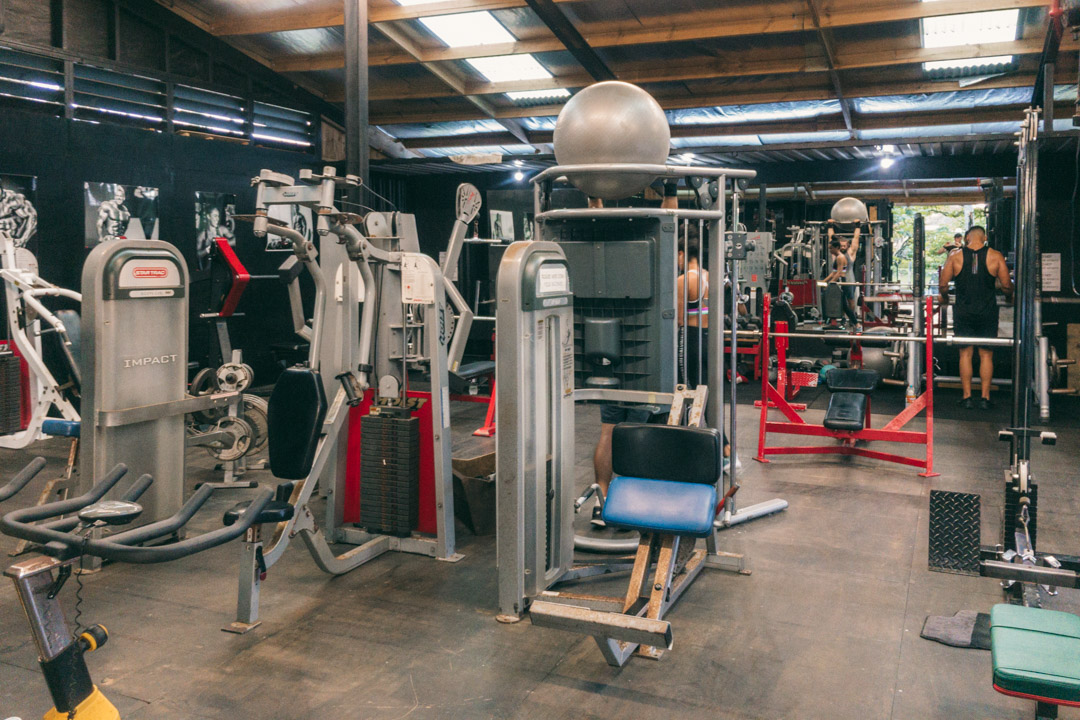
The Cook Islands SPCA
The Cook Islands SPCA is a charity focused on caring for animals in Rarotonga.
They improve animal welfare and educate locals on best practices.
Being without any kind of dedicated funding, they’re always looking for donations as well as volunteers that can help walk the sheltered dogs and more.

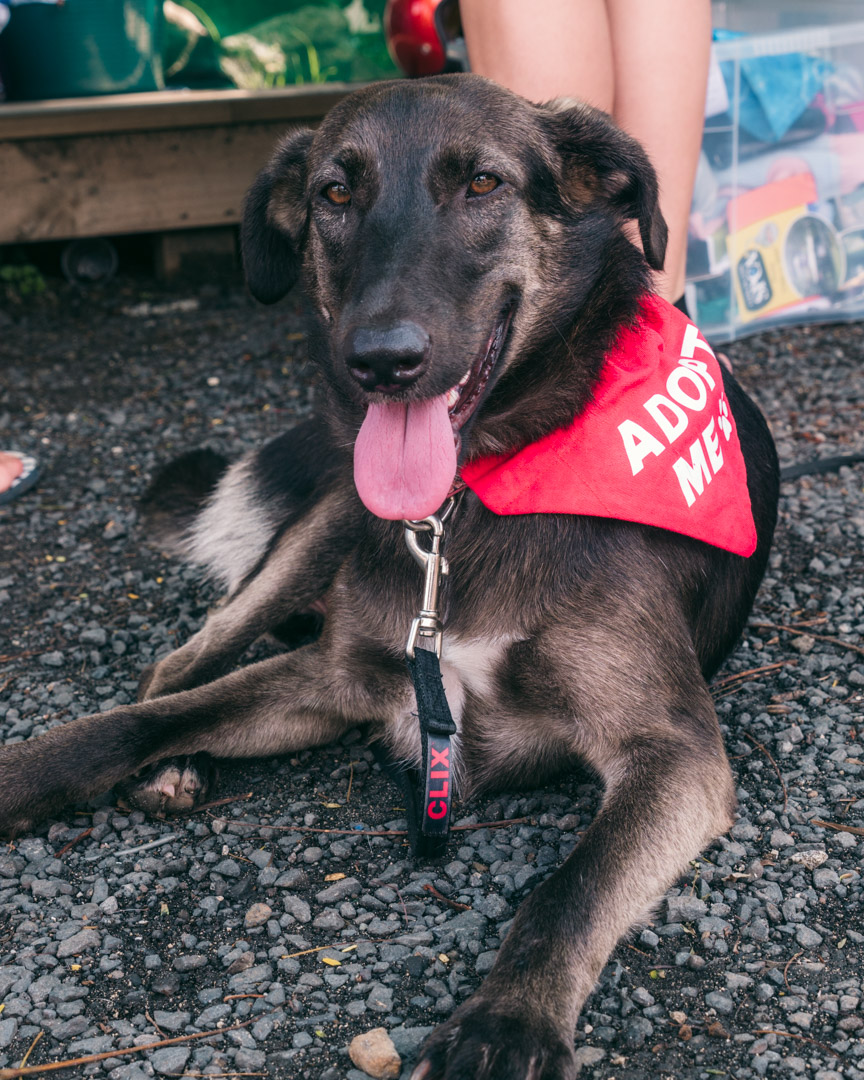
Other activities
Practice your mini golf skills at Aumata Mini Golf or Cocoputt, get dirty in the mud in an ATV with Raro Buggy Tours, try diving or go on a local safari tour.
You can also spend some time in one (or all) of the three museums on the island, for example you can visit the Cook Islands Library & Museum to learn more about the local history and culture.
To immerse yourself more fully into the local life in Rarotonga, consider going to church on a Sunday.
Areas and beaches
Avarua
Avarua is the main town of Rarotonga located just minutes from the airport and it’s where most of the island’s shopping and business is done.
It’s not of particular interest to most tourists, but if you need any kind of services it’s worth strolling around for a bit.
The Punanga Nui Market is located in Avarua.
Muri
Most tourists tend to stay near Muri in the southeastern part of Rarotonga.
The beach is great here and there are lots of small supermarkets, restaurants, scooter rental places and water activities nearby.
The lagoon is super clear and the small islands in the background make for beautiful photos.
Black Rock Beach
Black Rock Beach is located just south of the airport on the northwestern part of Rarotonga.
It’s a long stretch of beach very popular with locals and tourists alike.
As with every beach in Rarotonga and the Cook Islands, it’s stunningly beautiful. The water is warm and very clear.
The beach has gotten its name from the black rocks located in the southern part.
They form a small lagoon which is a great snorkelling spot. According to local lore, human spirits depart our world at the big rock in the water.


Aroa Beach
On the south-western part of Rarotonga, in front of the Rarotongan Beach Resort, you can find Aroa Beach.
It’s a marine reserve, so if you like snorkelling it’s a great place to see an abundance of fish. Be careful of stepping on any coral. It takes a long time for coral to regrow and we really need coral in the ocean.
The beach itself is great and not as windy as Muri Beach.
Titikaveka Beach
We stayed close to Titikaveka Beach and enjoyed it every time we had the chance.
It’s shallow and safe to swim at although there are some rocks and sea cucumbers at the bottom.
We actually didn’t snorkel at our own beach but it is supposedly one of the best snorkelling spots with lots of colourful fish.

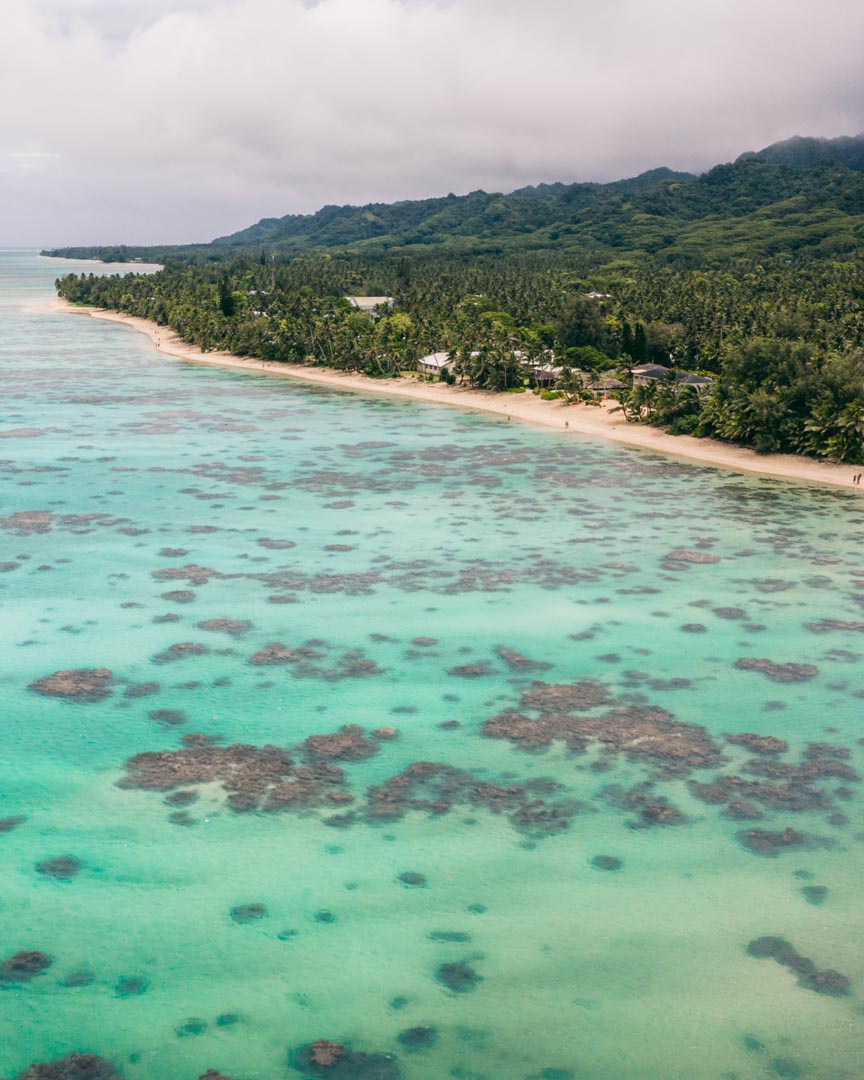
Where to eat in Rarotonga
Rarotonga has plenty of nice cafés and restaurants to keep you busy.
There is also a wide selection of supermarkets and markets if you wish to cater for yourself.
We mostly cooked for ourselves while staying in Rarotonga for about a month. Having your own kitchen helps keep costs down if you’re travelling on a budget and eating a special diet (we’re both vegans) is a lot easier this way.
Wigmore’s Superstore is a must-visit if you’re cooking healthy foods for yourself. Their organic assortment is great and there are lots of fresh veggies all week long.
Visiting the Punanga Nui Market is also a must.
Our three favourite places to eat out in Rarotonga:
- Kai & Co: The smoothie bowls at Kai & Co are super delicious. They also make a vegan burger and offer nice drinks and refreshments. Avarua
- Aqua Cafe: We had Sizzling Fajitas and a Falafel Burger poolside at Aqua Cafe. Muri
- Nautilus Restaurant: Call ahead for a special vegan dinner at Nautilus Restaurant overlooking the lagoon. Muri
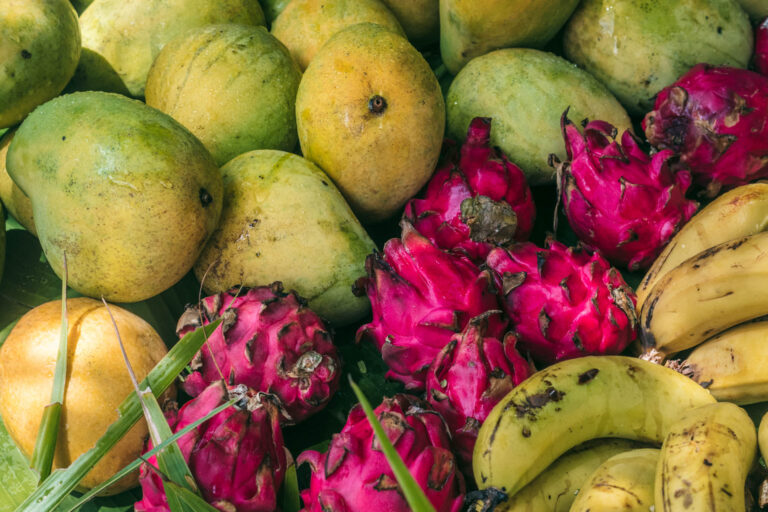

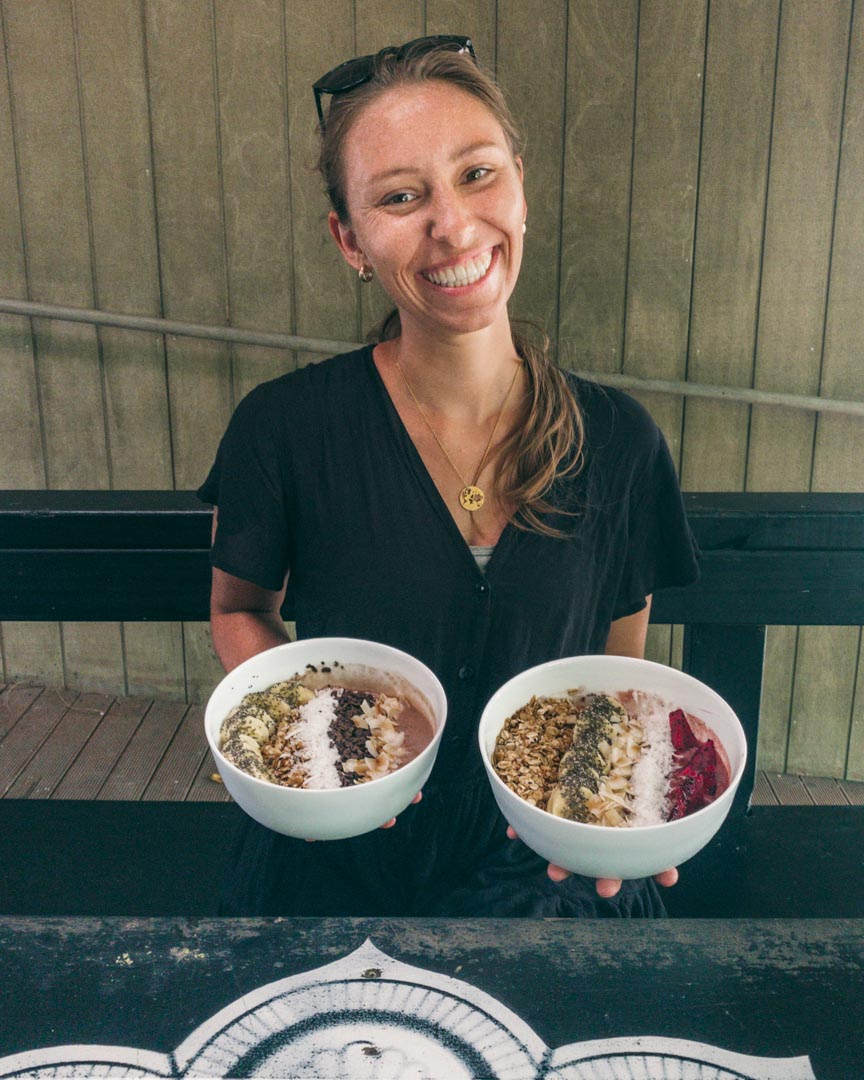
Map
Here’s a map showing all of the vegan-friendly cafés, restaurants, markets and supermarkets in Rarotonga mentioned in the article.
Click the icon in the top left corner of the map to navigate using a list.
Where to stay in Rarotonga
As there is just 32 kilometres of road running around the island of Rarotonga, there really is no such thing as a bad location.
You’ll always be close to beautiful beaches, restaurants and lots of activities.
Muri on the southeastern part of the island is a popular choice for tourists. Walking around the small township is easy and the beach is lovely.
The whole southcoast has nice beaches.
The western coast is also great for swimming and snorkelling as it’s often a bit more sheltered than the south.
You’ll find several nice resorts here as well and you get to watch the sunset every night.
Search for the best value accommodation in Rarotonga here (adlink).
Luxury
Staying in your own villa
For the ultimate luxury in Rarotonga, you’ll want to stay in your own private 5-star villa.
The following options aren’t exactly cheap, but if you want the best of the best, this is it.
Shop for yourself at the markets, get your groceries delivered or hire a private chef – the choice is yours.
Most of these villas also come with a private pool. Enough said.
- Te Manava Luxury Villas & Spa.
- Sea Change Villas.
- Te Vakaroa Villas.
- Crystal Blue Lagoon Villas.
- Rumours Luxury Villas & Spa.
- Heliconia Hideaway.

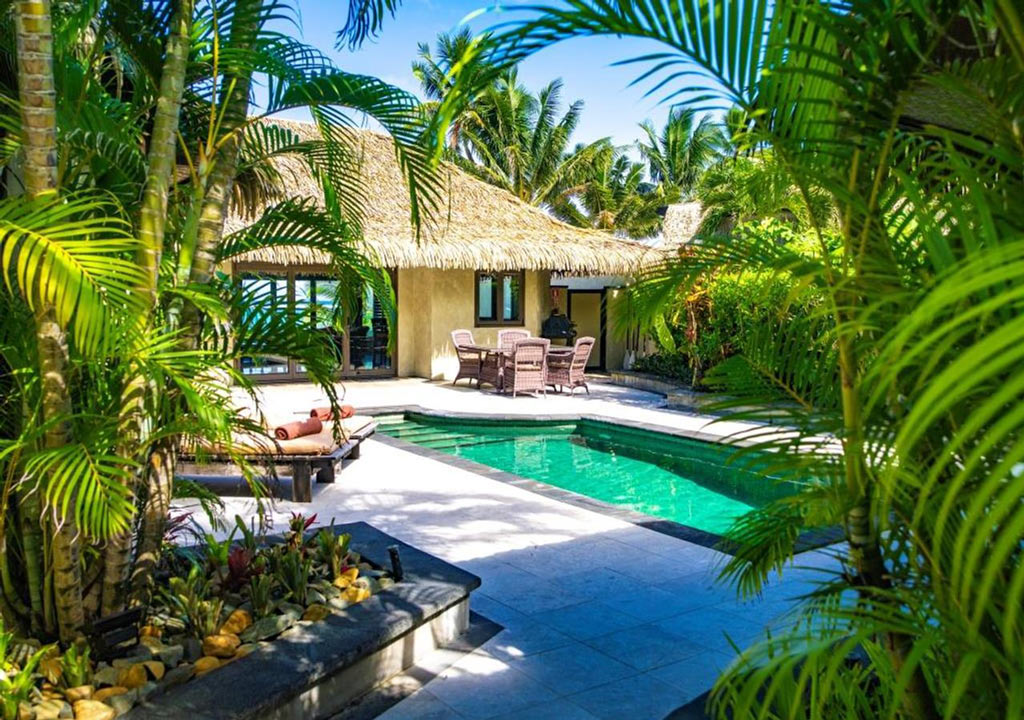

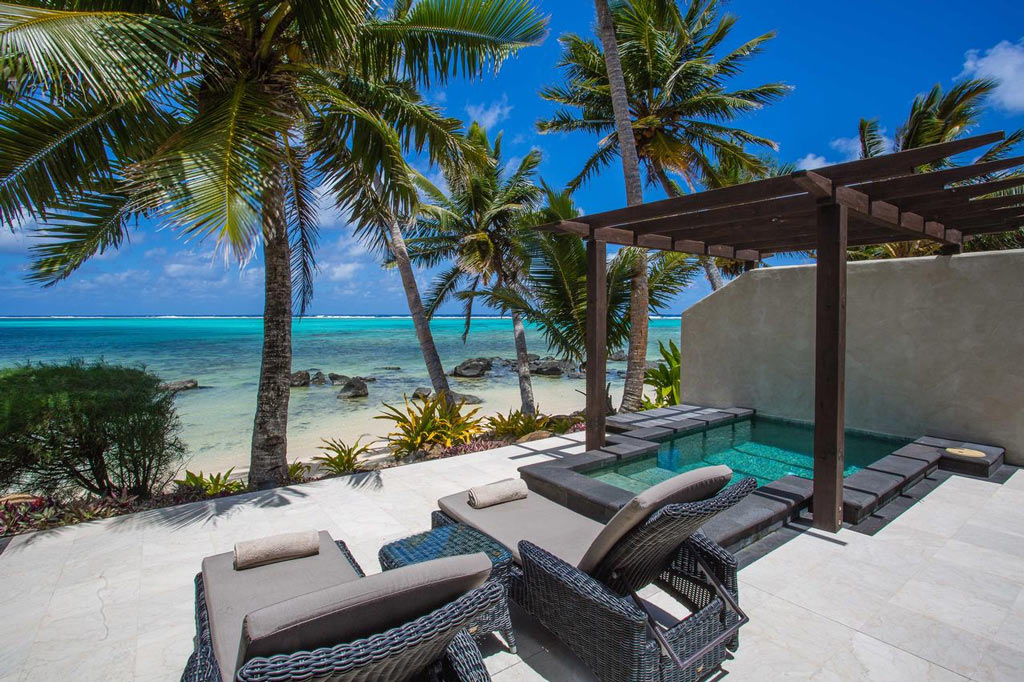
Little Polynesian Resort
Little Polynesian Resort offers Garden Studios with kitchenettes as well as Beachfront Bungalows for extra bliss.
The pool with beach views is impressive and the restaurant is known to cater well to special diets including veganism.
It’s a boutique resort and Little Polynesian Resort prides themself on providing excellent personalised service to their guests.
Check prices and availability at Little Polynesian Resort (adlink).




Pacific Resort Rarotonga
We stayed at Pacific Resort in Aitutaki and we can’t imagine that the sister resort in Rarotonga isn’t just as outstanding.
It’s located in the heart of Muri and offers 64 rooms surrounded by tropical gardens.
There’s a pool and the beach is located just outside the property where you can snorkel in the lagoon.
Check prices and availability at Pacific Resort Rarotonga (adlink).

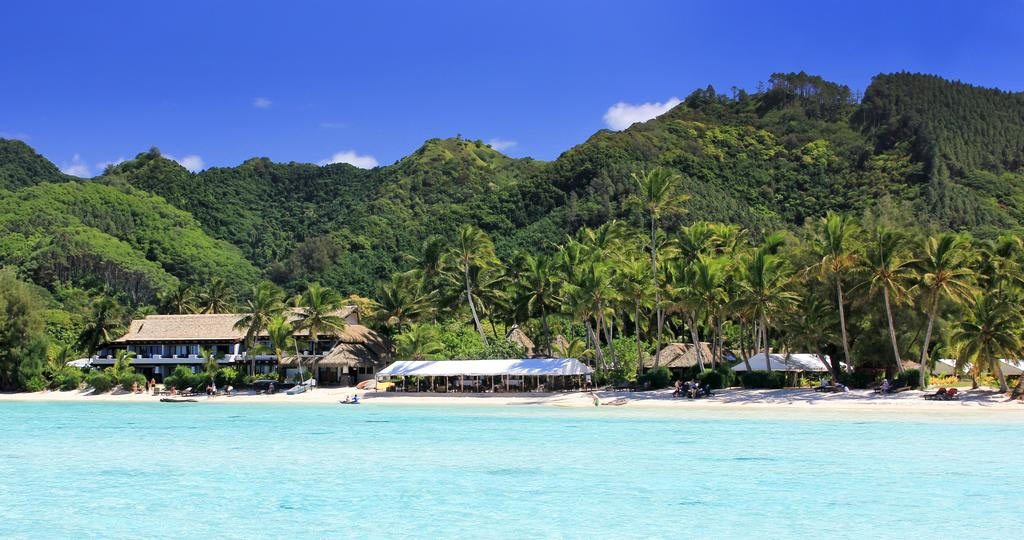
Value for money
The Edgewater Resort and Spa
The Edgewater is one of the closest resorts to the airport, so it’s a good choice if you just want to jump out of the plane and as quickly as possible into the warm waters of Rarotonga.
There are lots of different accommodation options ranging from studio apartments and double rooms with garden views to deluxe suites and beachfront villas.
Check prices and availability at The Edgewater Resort and Spa (adlink).

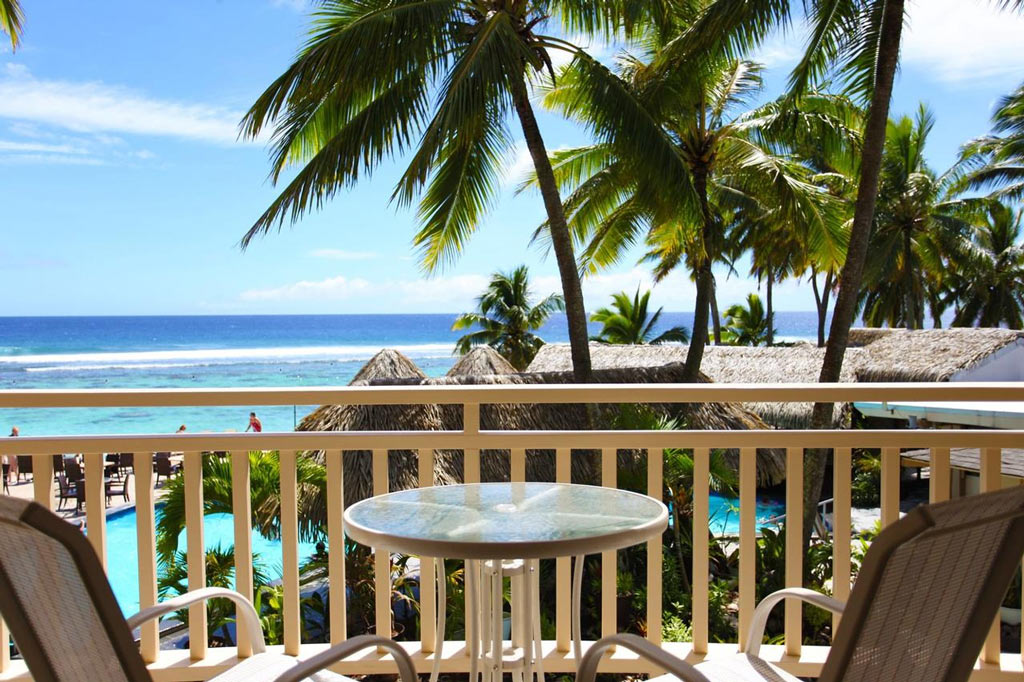

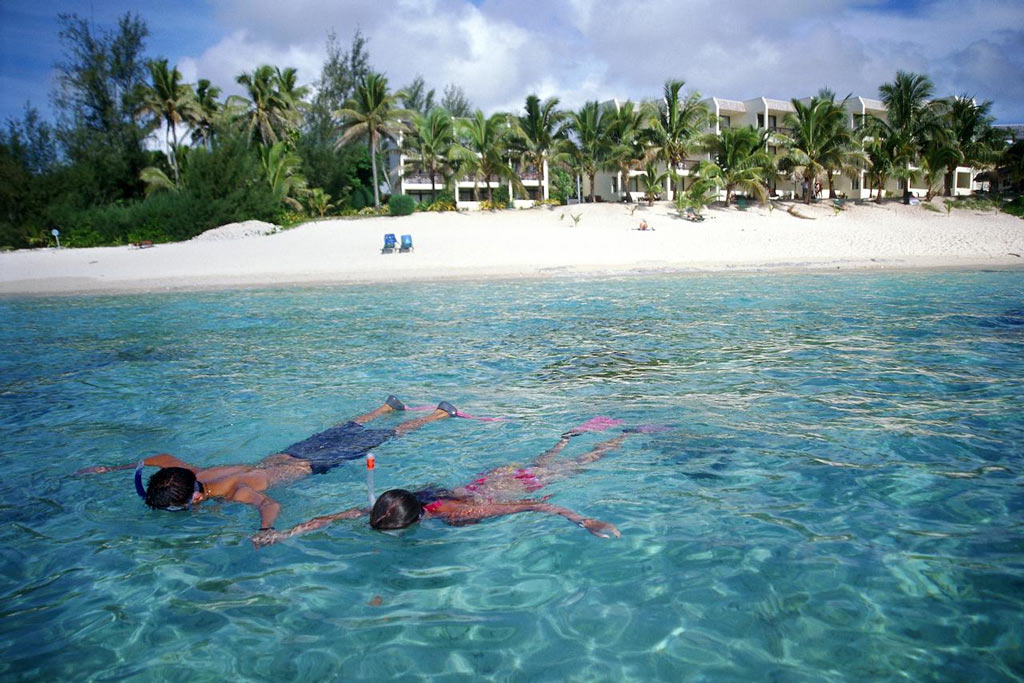
Moana Sands Beachfront Hotel
All of the rooms at Moana Sands Beachfront Hotel are located beachfront and have sea views. They also have air conditioning.
The beachfront studios all come with small kitchenettes so you can do some light catering for yourself.
Check prices and availability at Moana Sands Beachfront Hotel (adlink).

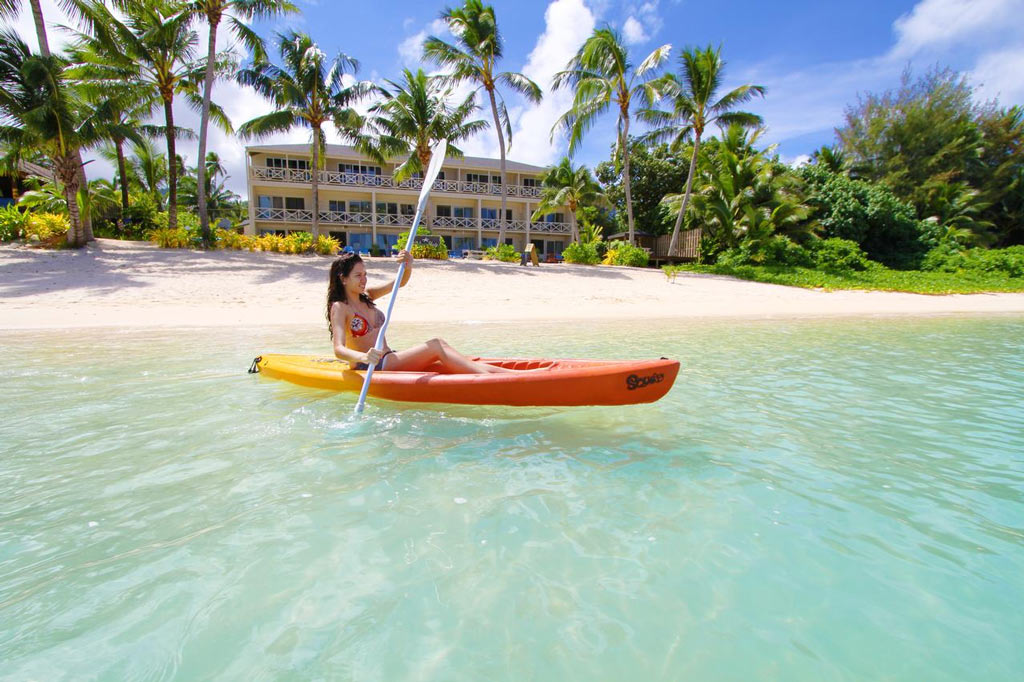
Muri Beach Club Hotel
Muri Beach Club Hotel is located beachfront in Muri Lagoon where you have extraordinary views across the clear waters to the small islets (motus).
Each of the 30 rooms have air conditioning and you can choose between having a garden view, pool view or beachfront accommodation.
Check prices and availability at Muri Beach Club Hotel (adlink).


Nautilus Resort
We dined at Nautilus Resort and if the accommodation options are as great as their food, staying here is a fine choice.
It’s located near Muri and it’s possible to snorkel directly from the resort’s doorsteps.
Check prices and availability at Nautilus Resort (adlink).

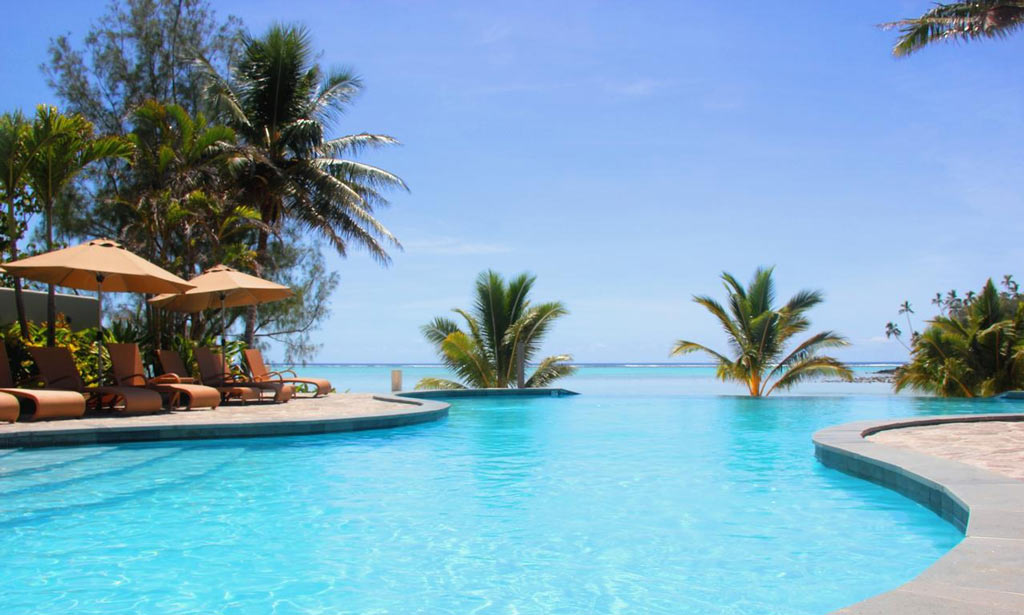
Budget
Raina Beach Apartments
For our month-long stay in Rarotonga, we stayed at Raina Beach Apartments in an Apartment with Sea View.
Having our own fully-equipped kitchen was perfect for us and made it much easier to eat a healthy vegan diet on a budget while visiting the Cook Islands.
The decor isn’t updated to the newest design standards, but if you can live with that, Raina’s might be the best budget choice if you want to stay in the south of Rarotonga just steps from a lovely beach.
Check prices and availability at Raina Beach Apartments (adlink).

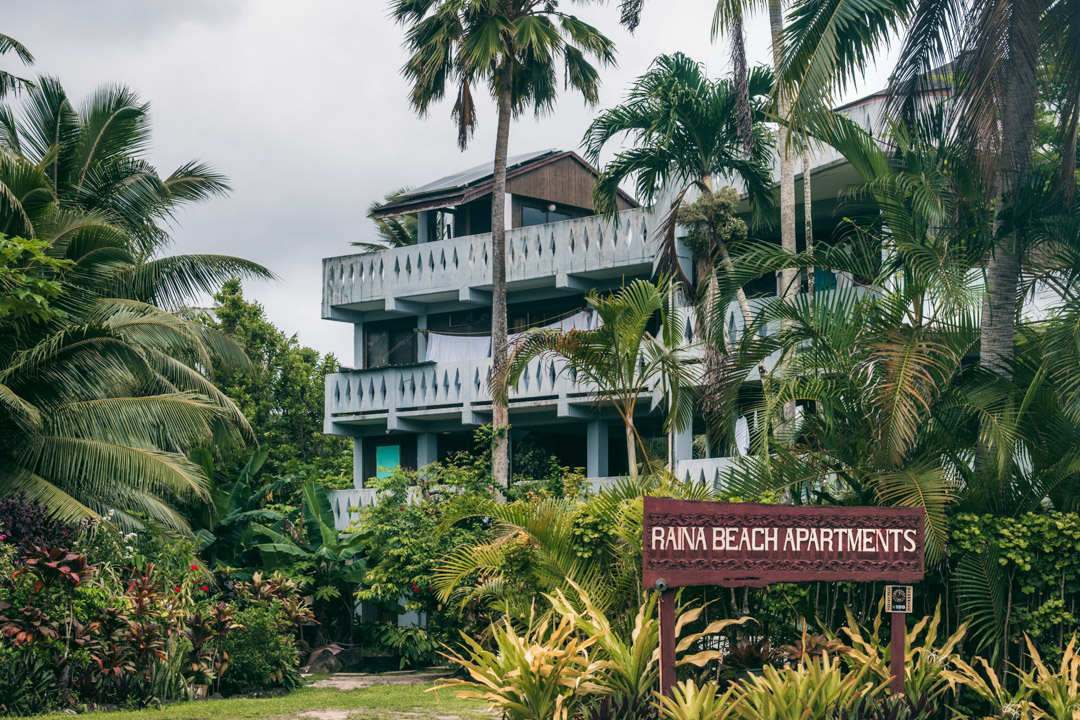

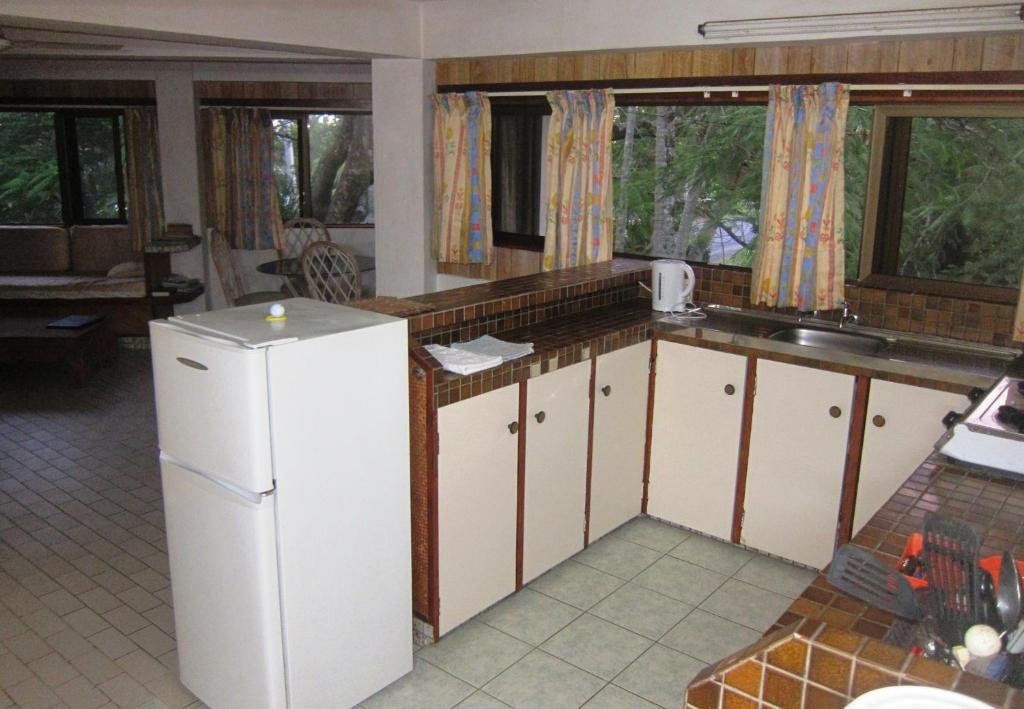
JO’s Farmstay
JO’s Farmstay offers 3 family-friendly cottages in Matavera, 2.5 kilometres from Muri Beach.
Free bikes are offered and the garden is home to goats and chickens which children will surely love. The ocean is 300 metres away.
Check prices and availability at JO’s Farmstay (adlink).

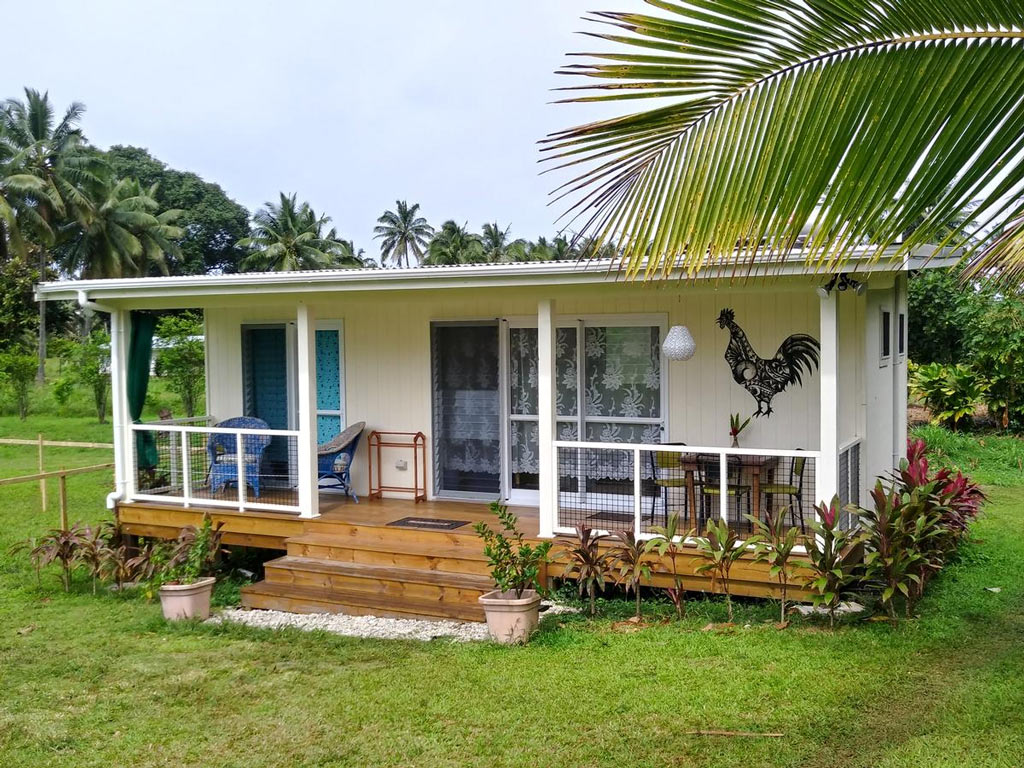
Tropical Sands
At Tropical Sands it’s possible to stay in your own villa with either a garden view or sea view.
If you want to cook for yourself while staying in Rarotonga and be close to Muri Beach, Tropical Sands looks like a nice place.
Check prices and availability at Tropical Sands (adlink).


How to get around Rarotonga
With the road all around Rarotonga being just about 32 kilometres in length (~ 20 miles), getting around the island isn’t exactly a time-consuming affair.
The main road (called Ara Tapu) is in good condition and the general speed limit is 50 km/h except for areas of the tourist town of Muri and the main town of Avarua where the speed limit is 30 km/h.

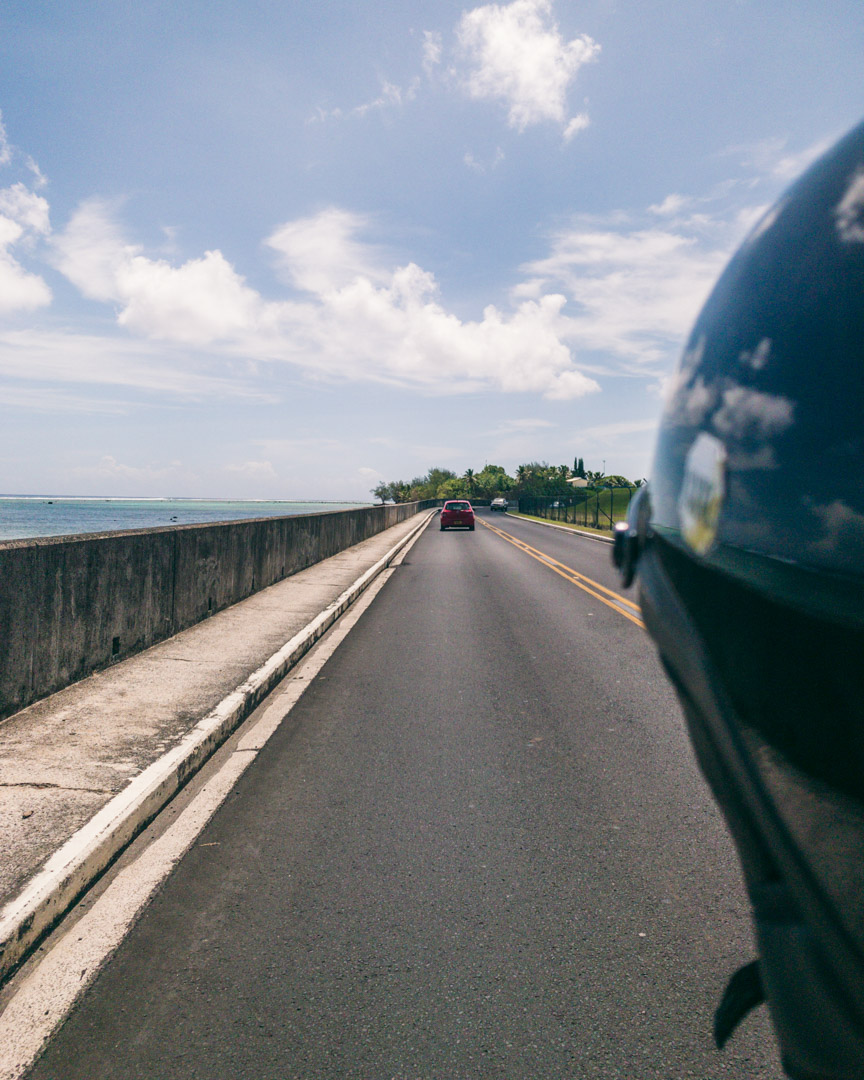
Walking
While there are only sidewalks in Avarua, there is generally both very little traffic and a big enough shoulder on the main road to walk comfortably.
The back road (Ara Metua) is much quieter but doesn’t go all the way around the island.
Heat might make longer outings during the day a bit sticky, at least during summer.
There are street lamps here and there, but we wouldn’t recommend walking by the side of the road after dark outside Avarua and Muri.

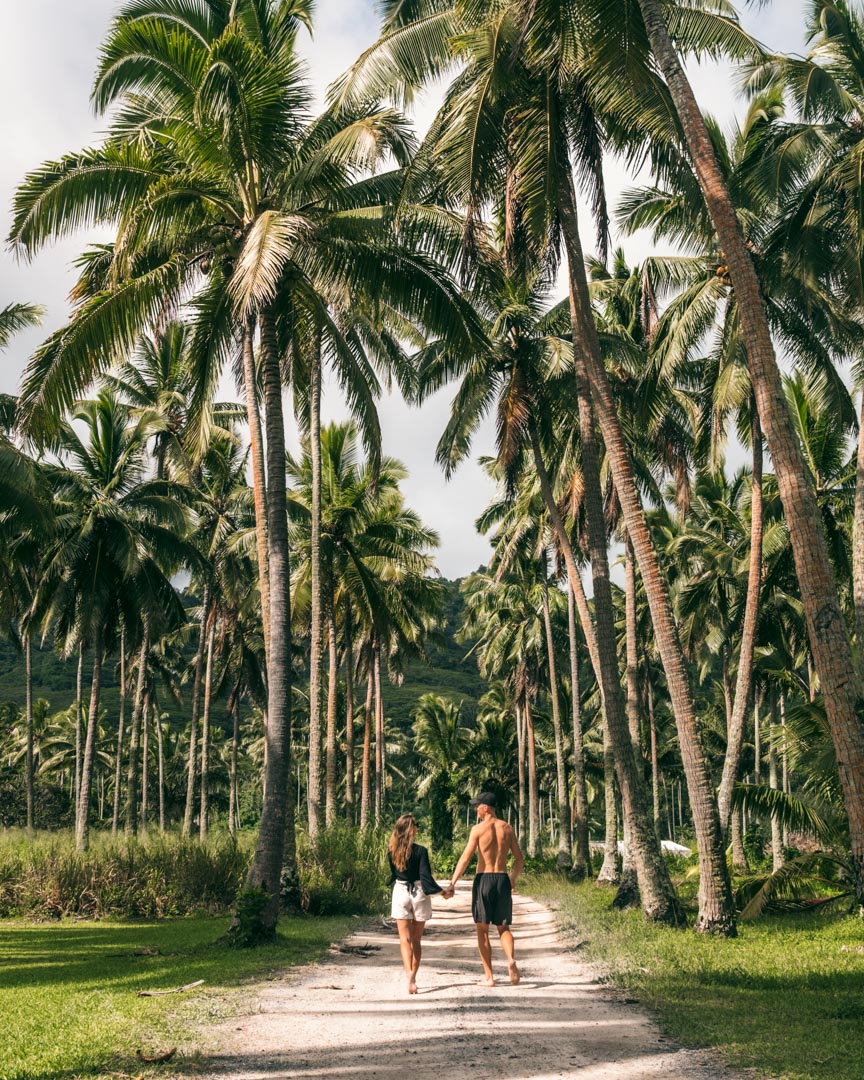
Public transport
There are two buses in Rarotonga: One going around the main road clockwise, the other one going around it anti-clockwise.
Taking the bus is a relatively cheap way to get around and offers a unique glimpse in the day-to-day life of Rarotonga.
Be aware that to get off the bus, you have to walk to the front and tap the driver on the shoulder.
A single ride is 5 NZD (~ 3.2 USD / 3 EUR). A return ticket is 8 NZD (~ 5 USD / 4.7 EUR)*. There are also day passes available.
*Prices are from 2020.
Private transport
As we arrived very late at night, we had made prior arrangements to get picked up at the airport.
The price for the service was 20 NZD per person (~ 13 USD / 12 EUR), so 40 NZD for the two of us (~ 26 USD / 24 EUR)*.
We booked the taxi through our accomodation and the service was completely easy and hassle-free.
The lovely taxi driver even stopped on the way in one of the 24/7 supermarkets so we could do some shopping for the following day’s breakfast. We paid in cash on arrival.
*Prices are from 2020.
Renting a scooter
We rented a scooter for our stay in Rarotonga.
It’s easily recommendable if you plan to stay for longer or simply want to zip around the island in no time on your own schedule.
Prices generally start at 20 NZD (~ 13 USD / 12 EUR) for a single day and go down to about 15 NZD (~ 9.6 USD / 9 EUR) per day for longer hires*.
You might be asked to pay 2 NZD (~ 1.3 USD / 1.2 EUR) per helmet*. This should be negotiable if you’re renting a scooter for more than a day or two.
We rented our scooter from Island Car and Bike Hire in Muri and got picked up from our accommodation free of charge to get to the scooter.
When we had a small problem with the front-wheel, we got a new scooter without any hassle.
*Prices are from 2020.

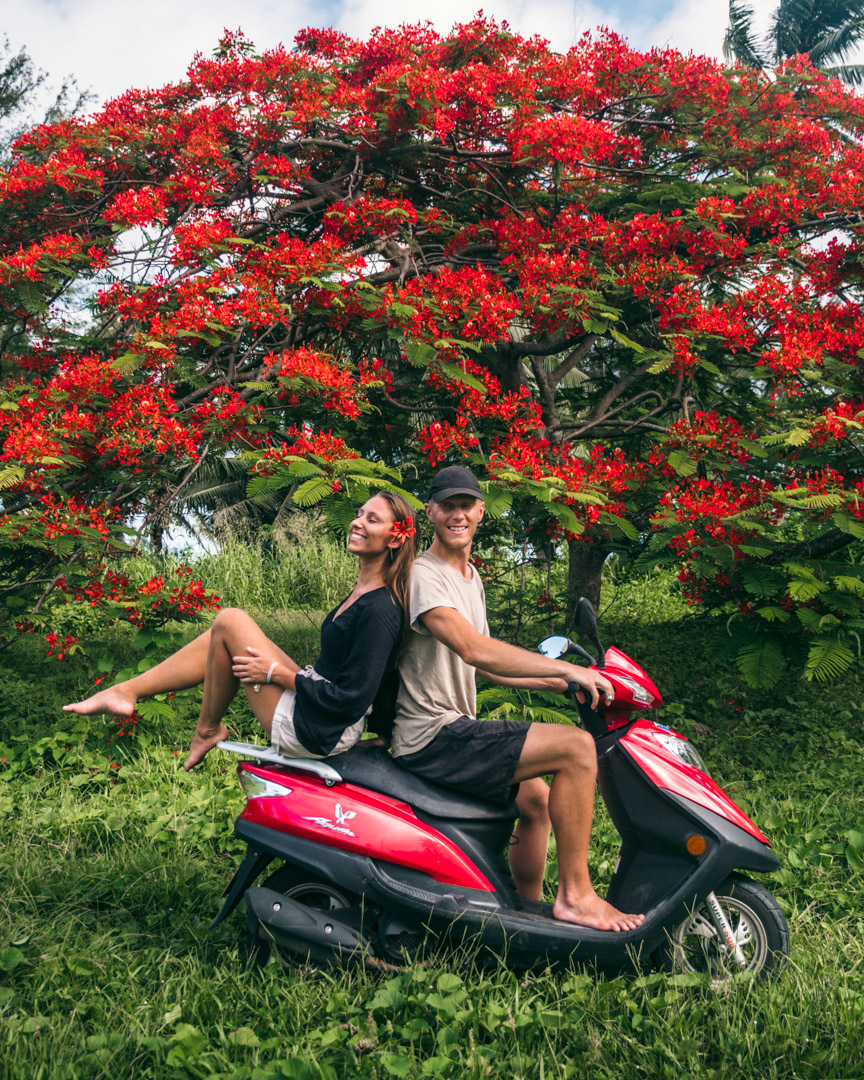
Getting a license
To drive a scooter in the Cook Islands, you need a scooter/motorbike license.
If you only have a license to drive a car from your home country, you need to go to the police station in Avarua and take a small test to get your Cook Island’s license.


Renting a car
It’s also possible to rent a car while visiting Rarotonga.
While more expensive than renting a scooter, it might be a more attractive option as you’ll be sheltered from both rain and sun.
There are plenty of rental outfits all-around Rarotonga and your accommodation will be happy to help you out as well.
Remember to drive on the left-hand side of the road.
Renting a bicycle
We saw several different bicycle rental places in Rarotonga renting out mountain bikes, e-bikes and regular bicycles.
If you don’t have a driver’s license from your home country or a visit to the police station in Avarua doesn’t sound like a fun idea, renting a bicycle might just be your best option for getting around Rarotonga in a cheap, flexible and sustainable way.

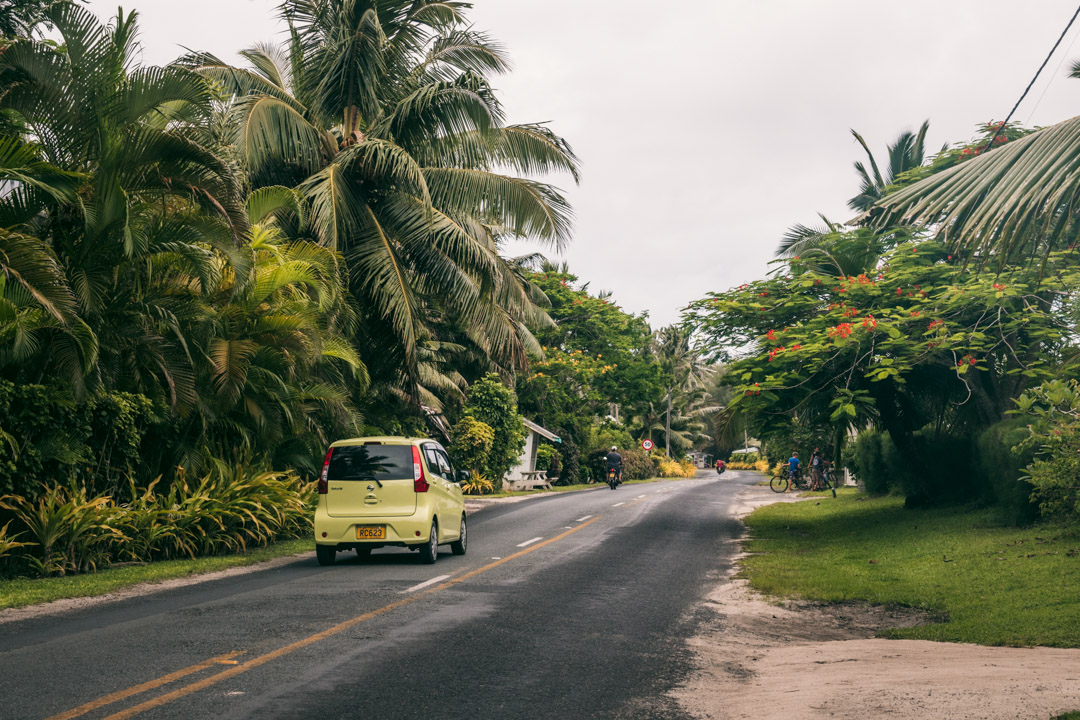
How to get to Rarotonga, the Cook Islands
The only international airport in the Cook Islands is located in Rarotonga.
Air New Zealand, Jetstar Airways and Virgin Australia operate flights from Auckland to Rarotonga several times a day.
With Air New Zealand it’s also possible to travel directly from Sydney or Los Angeles once per week.
Air Tahiti flies from Papeete in French Polynesia.


Carbon offsetting
A flight to Rarotonga in the Cook Islands will inevitably emit a lot of CO2.
If you want to be awesome, consider offsetting your flight’s carbon footprint.
We have written an article about the subject here that gives a good overview of your different options:
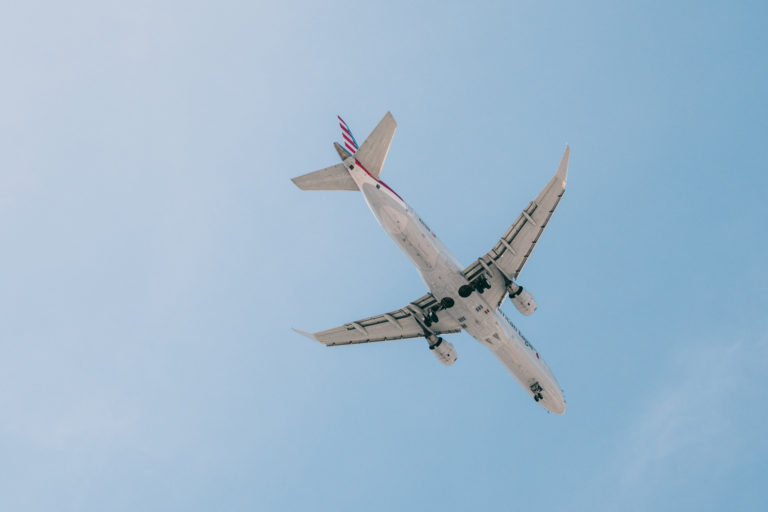

When to visit Rarotonga and the Cook Islands
Rarotonga and the Cook Islands have a truly tropical climate and can be visited year-round for sun and warm waters.
The temperatures generally go down to about 22°C (71.6°F) when it’s “cold” and all the way up to 30°C (86°F).
The yearly average is between 25°C and 28°C (77°F and 82.4°F).
Rainy season and dry season
In the summer months aka the rainy season (December to April) it’s hotter, rains more and becomes more humid.
It also brings fewer tourists and many fruits are in season.
The dry season approximately lasts from June to October.
It can rain all year but mostly, the showers are short and warm.
Timing your visit
The most popular time of year to visit Rarotonga is in July and August when it’s wintertime in New Zealand and Australia.
If you can, try to avoid the school holidays as prices on accommodation go up.
Rarotonga never really gets crowded or busy, though. Only the few times a year a cruise ship comes by for the day.


Our experience in January and February
We visited Rarotonga and the Cook Islands at the end of January/beginning of February 2020.
That meant that we arrived during the height of the rainy season that usually falls from December to March.
While it was pretty hot, humid and rained almost daily, the temperature never exceeded what is comfortable.
The humidity made working out a sweaty affair, but the short rains always cleaned up the air and cooled everything down.
Extra green
And while Rarotonga is probably pretty green year-round, every plant looked vibrant and happy as ever.
Lots of fresh produce was in season including deliciousness like mangos, avocados, pineapples and passion fruit.
Although there were a few grey days, most rains lasted for less than an hour, some even just minutes, and there was plenty of sunshine in-between to enjoy time at the beach.

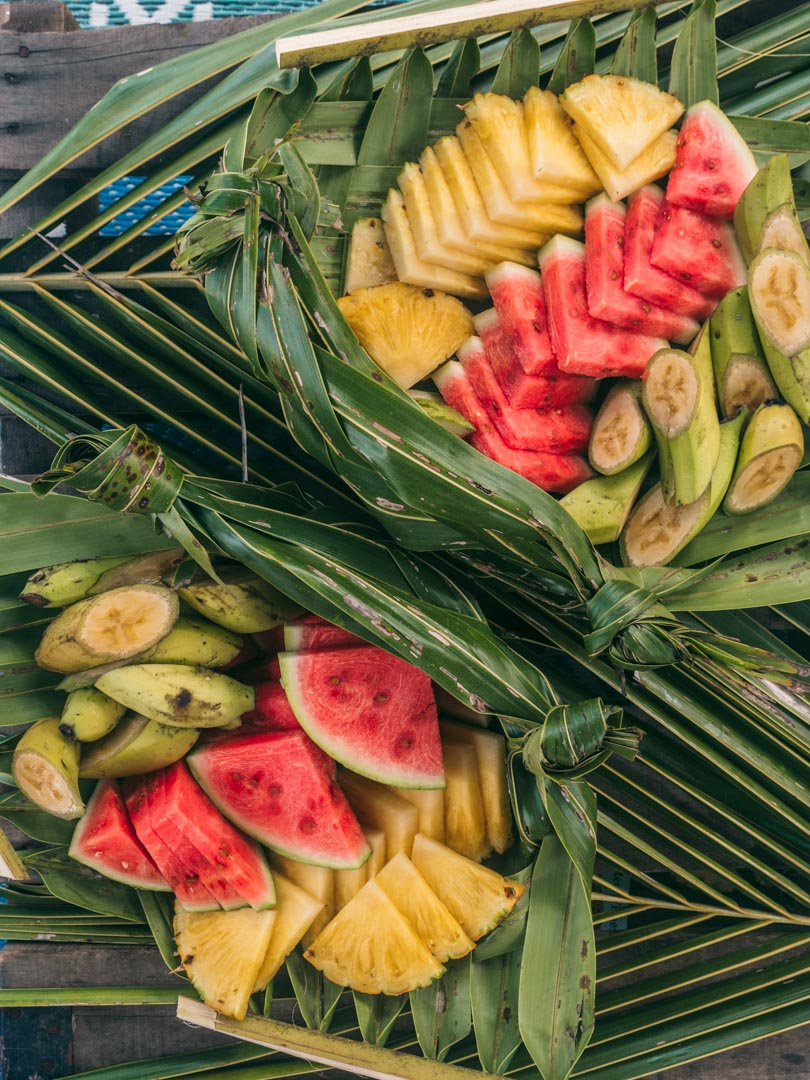
Internet in Rarotonga and the Cook Islands
To our knowledge, there’s no free wifi in Rarotonga or in any other of the Cook Islands.
While the internet in Rarotonga is fast enough, it’s rather expensive.
A preloaded Travel SIM from Vodafone can be a good deal. For 49 NZD (~ 31 USD / 29 EUR), you get 3GB of data, 30 minutes of talk and 300 texts.
At the time of writing, 4G is available in Rarotonga and Aitutaki. 3G is available in Atiu, Mitiaro and Mauke. All the other outer islands have 2G.
Wifi hotspots are set up around the island and data for those can be purchased in several places. They’re easy to use – you just connect to a hotspot and login with your bought credentials.
There are different options topping out at 6GB for 50 NZD (~ 32 USD / 30 EUR) (30 days expiry).
Fiber is coming to Rarotonga and the Cook Islands, but we don’t know exactly when.

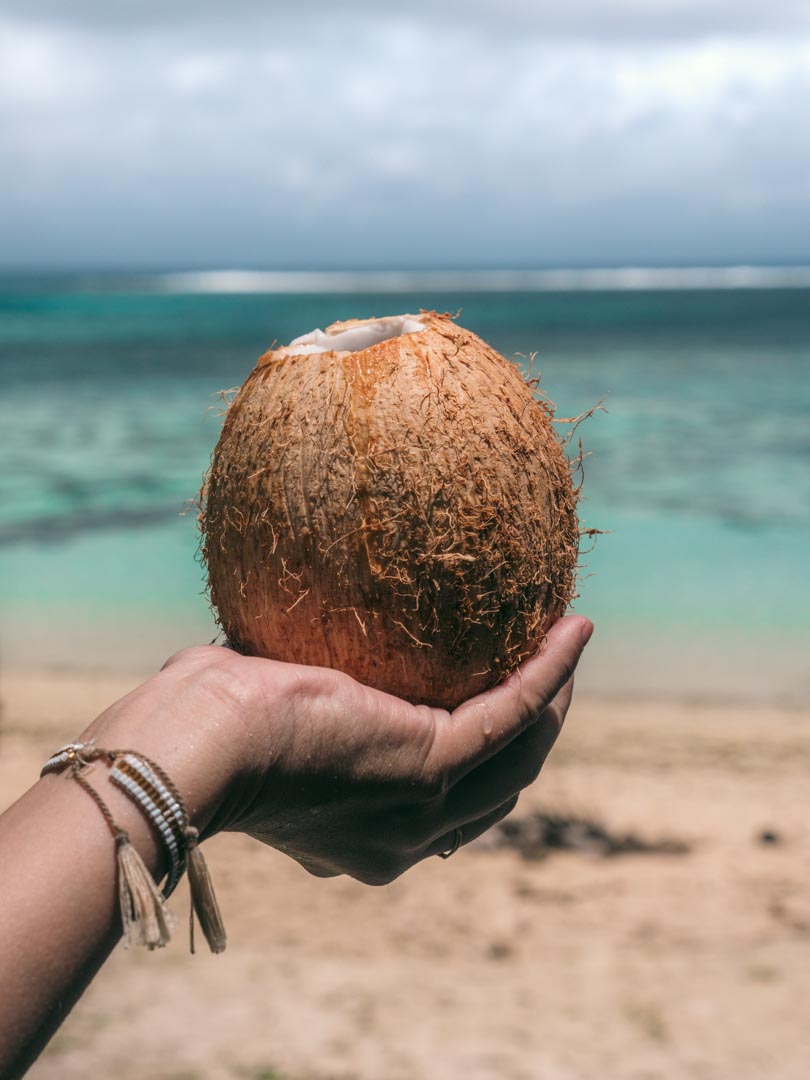
Visiting the Cook Islands on a budget
Visiting Rarotonga doesn’t have to be as expensive to visit as you might think.
While prices are a far cry from true budget destinations, it’s possible to live comfortably and rather cheaply if you stay in a self-catered apartment and cook for yourself.
Restaurant meals and tours are most likely what makes some people’s Rarotonga vacation expensive.
If you’re eating out every day and doing plenty of tours you’ll end up spending quite a bit. Go for it if that’s what’s a vacation to you, we don’t blame you!
For staying a month in a big apartment close to the beach with our kitchen, we paid about $2,000 NZD (~ 1,280 USD / 1,180 EUR).
Shorter stays are usually more expensive per night.


Safety in Rarotonga and the Cook Islands
People are really friendly in Rarotonga and the Cook Islands and we felt perfectly safe during our month-long stay.
While you should still have common sense regarding valuables, we really didn’t worry at all about crime or general safety.
The only nuisance is barking dogs and a few roosters here and there. Sunburn is most likely the biggest danger of visiting the Cook Islands.
There’s a small prison in Rarotonga with about 30 “inmates” at the time of writing.
Most of them are in there for petty-theft or marihuana-related incidents – which is punished quite heavily for even carrying small amounts.
Dangerous animals
Mosquitoes can be annoying. Avoid mosquito bites as well as you can be using repellant and cover yourself when and where they’re most active.
Always check the current situation before travelling to be safe. Check out the Cook Islands Traveler View on the CDC website (Centers for Disease Control and Prevention).
There are no dangerous spiders or snakes in Rarotonga.
We were told that the most dangerous animal is Stonefish who hide further out in the lagoon. Some centipedes apparently also bite.

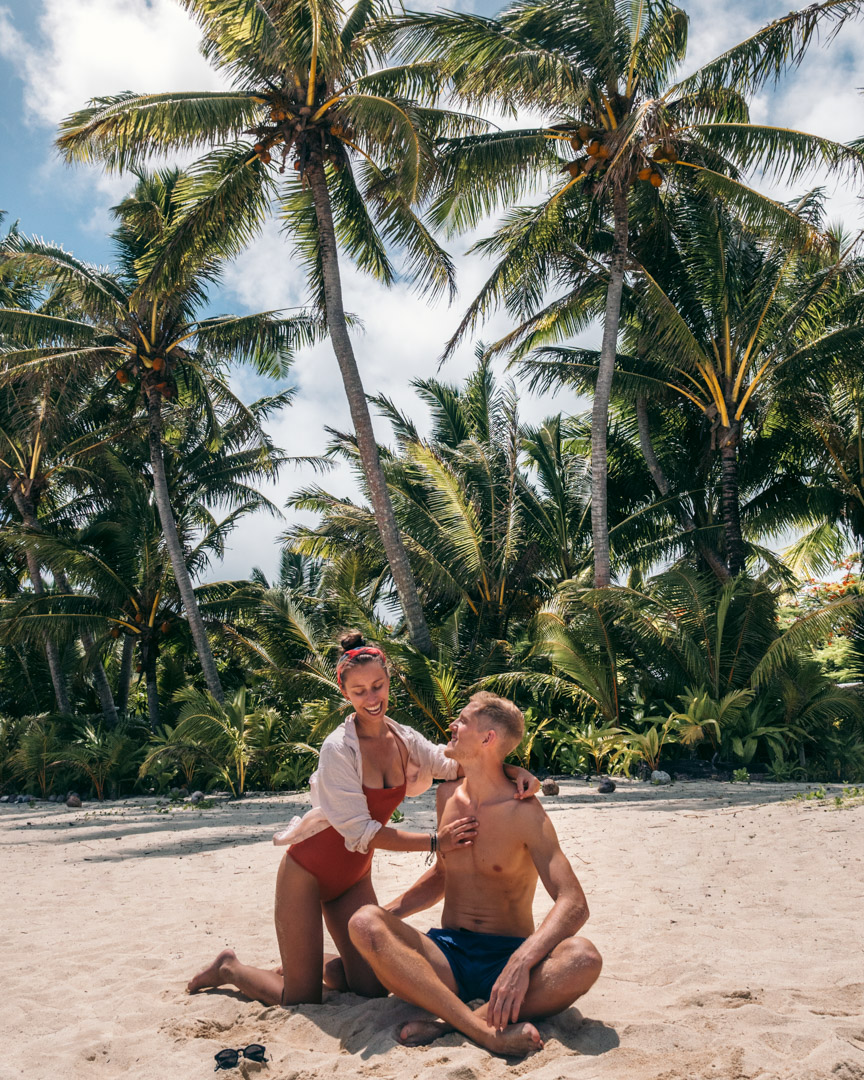
Our best tips for visiting Rarotonga
- The currency in the Cook Islands is the New Zealand Dollar.
- There are plenty of ATMs around Rarotonga. Many shops, restaurants and hotels accept credit cards.
- If you don’t have it available in your accommodation, you can get free, clean drinking water at several water stations placed strategically around the island.
- A hospital is located near Avarua. For more serious illnesses and operations, patients are usually flown to Auckland in New Zealand.
- Travel in the off season for cheaper rates on flights and accommodation.
- Book your accommodation well in advance if you’re travelling in the high season months of December, January, July and August. While there are likely always beds available, the best hotels get booked out months ahead.
- The electrical outlets in Rarotonga and the Cook Islands are the type I plugs. Voltage is 240 V and the standard frequency is 50 Hz. We had no problems using our electrical appliances with a simple adapter.
- Beachwear stays on the beach. Cook Islanders are pretty traditional and wearing beachwear away from the beach is not well looked upon.
- Rarotonga is very family-friendly. It’s safe, there are lots of great things to do and Cook Islanders love children.


What to pack for Rarotonga and the Cook Islands
- A good camera – here’s a guide to the gear we use.
- Travel insurance (adlink). Never travel without it!
- Pack light! The weather is sunny and warm year-round. Get our best packing tips for travelling lighter in this guide.
- Swimwear. You will want to use it daily.
- Bring a rain jacket if you travel in the rainy season.
- A sarong or a quick-dry towel (adlinks) for drying and chilling on the beach (or for covering up when not on the beach).
- Sun protection; a hat, sunglasses, light covering clothes and an organic, reef-safe sunscreen (adlink).
- Mosquito repellent.
- Hiking shoes or sneakers if you want to hike or do other outdoor activities.
- Reef shoes and snorkel gear if you plan to spend much time in the water. You can also easily rent equipment on the island.
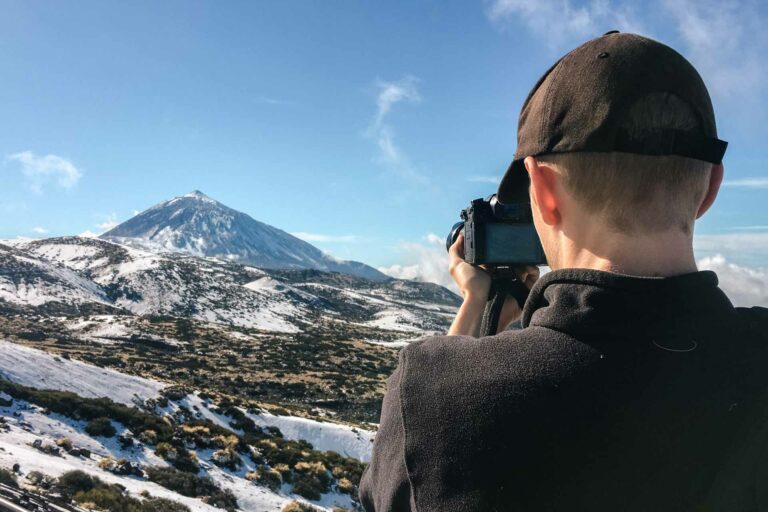


Kia Orana!
Kia Orana is the greeting of choice in the Cook Islands and literally translated it means something like “May you live a long and happy life”.
Visiting the Cook Islands might just be what you need to recharge your vitality and we hope that this guide to Rarotonga has been useful.
What do you think about Rarotonga and the Cooks?
If you’ve been here, it would be awesome to hear your best tips in the comments. If you haven’t been yet, please don’t hesitate to ask us anything. We’re glad to help.

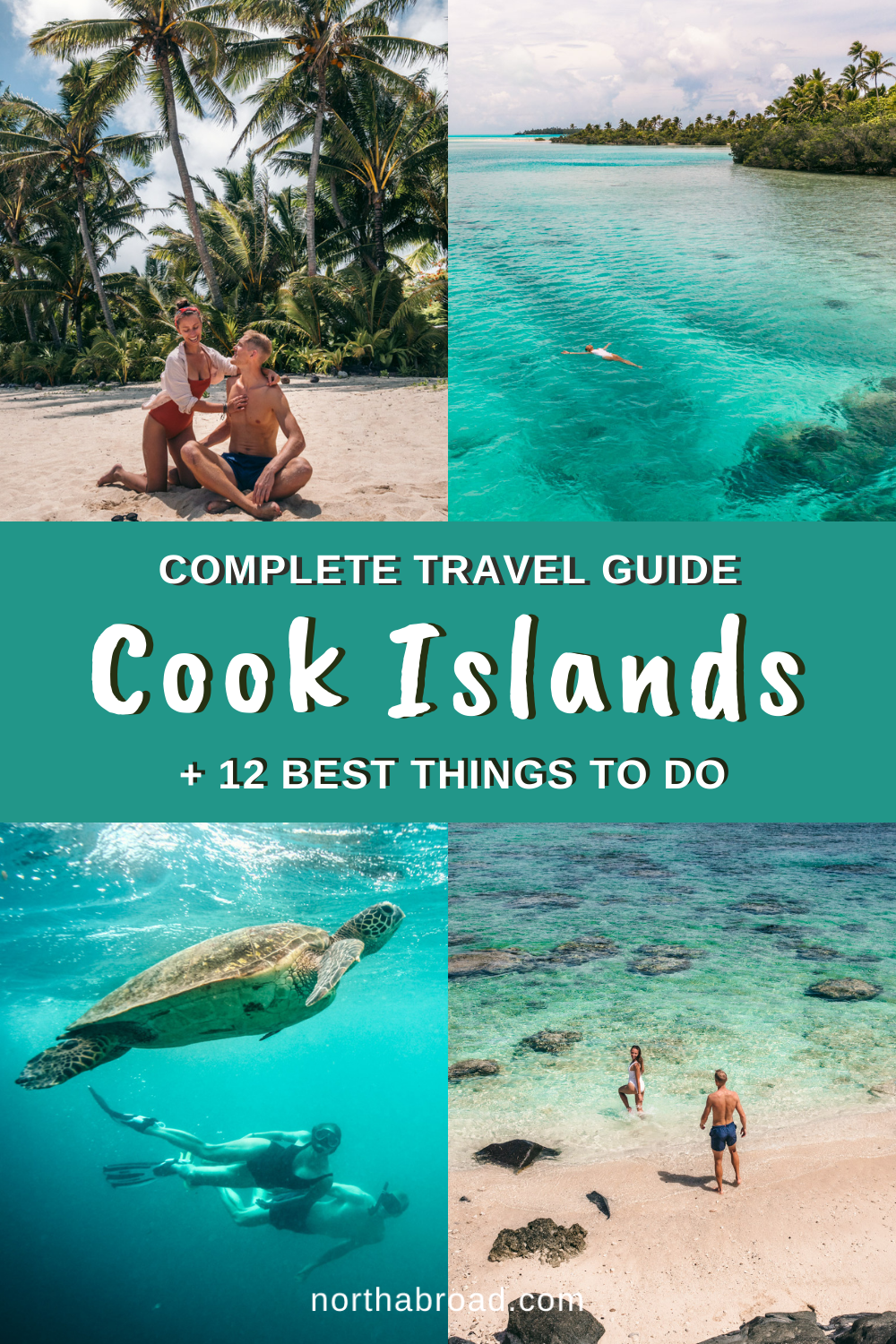

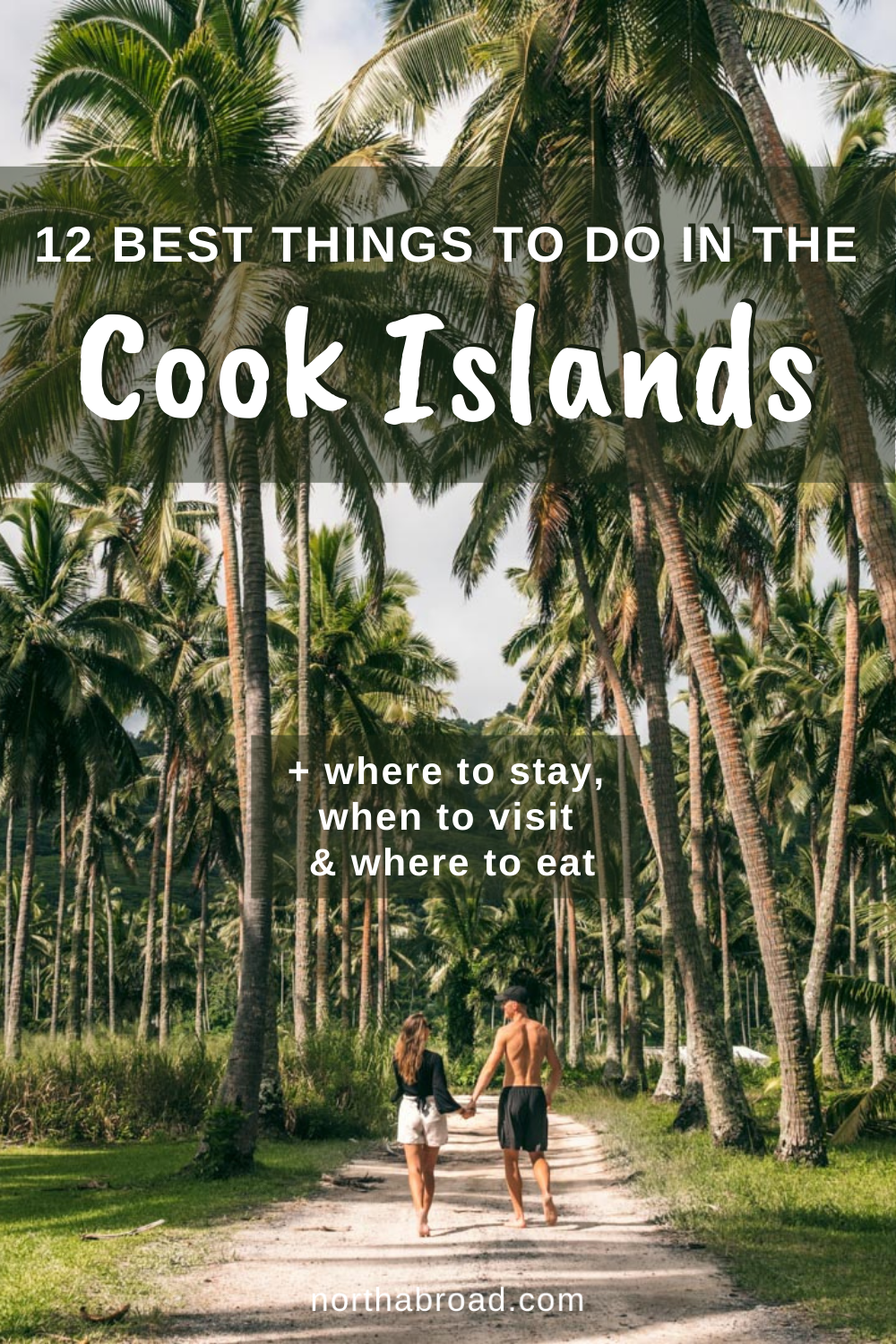

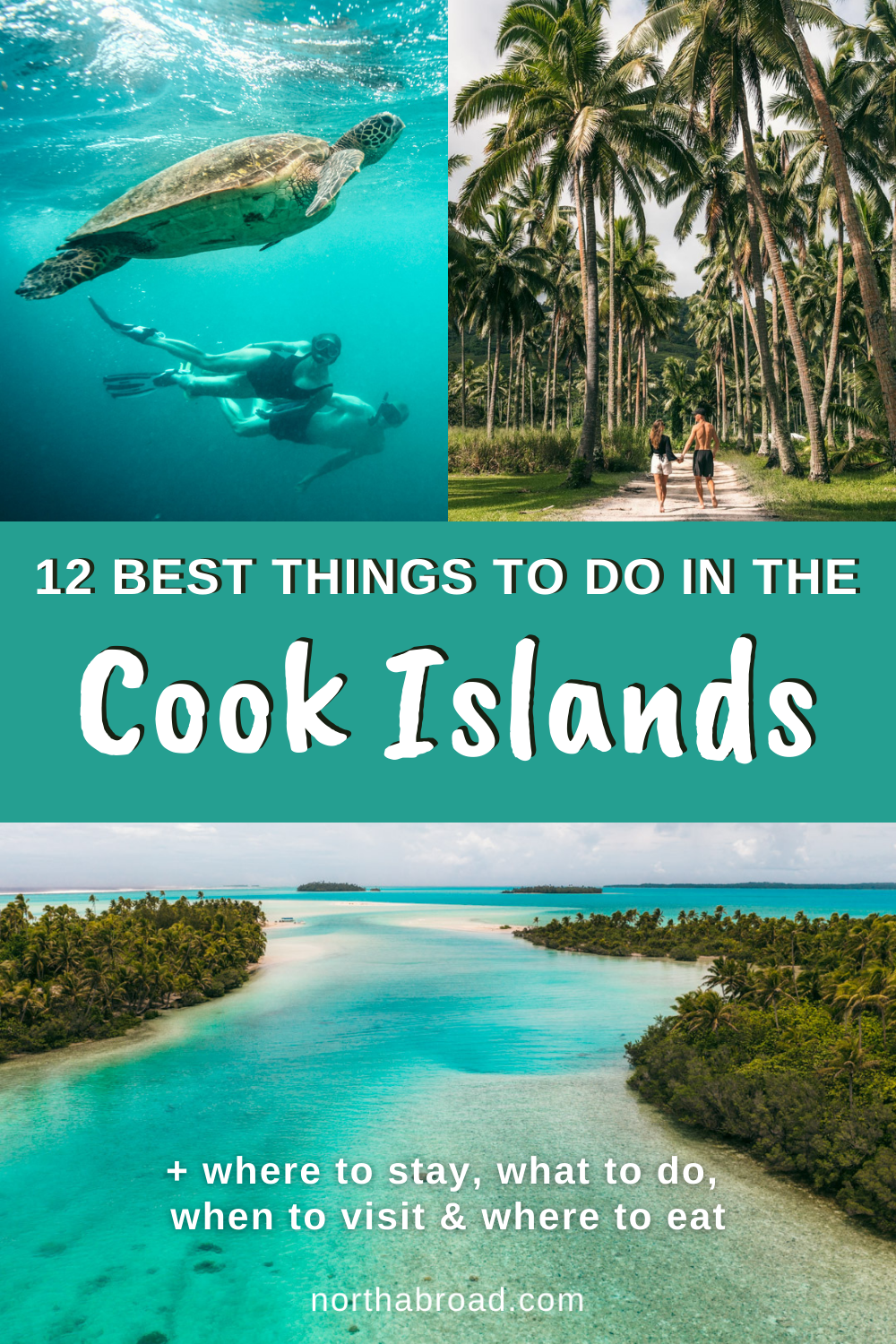
Our favourite travel resources:
- Booking.com for cheap hotels.
- Momondo for the best flight deals.
- SafetyWing for travel insurance. We also like World Nomads and True Traveller. All three compared here.
Our camera gear:
- Panasonic GH5. Used for all of our photos and videos.
- DJI Mavic 2 Pro. Best drone out there!
- Sirui Tripod. Lightweight and strong.
- See all of our camera gear here.
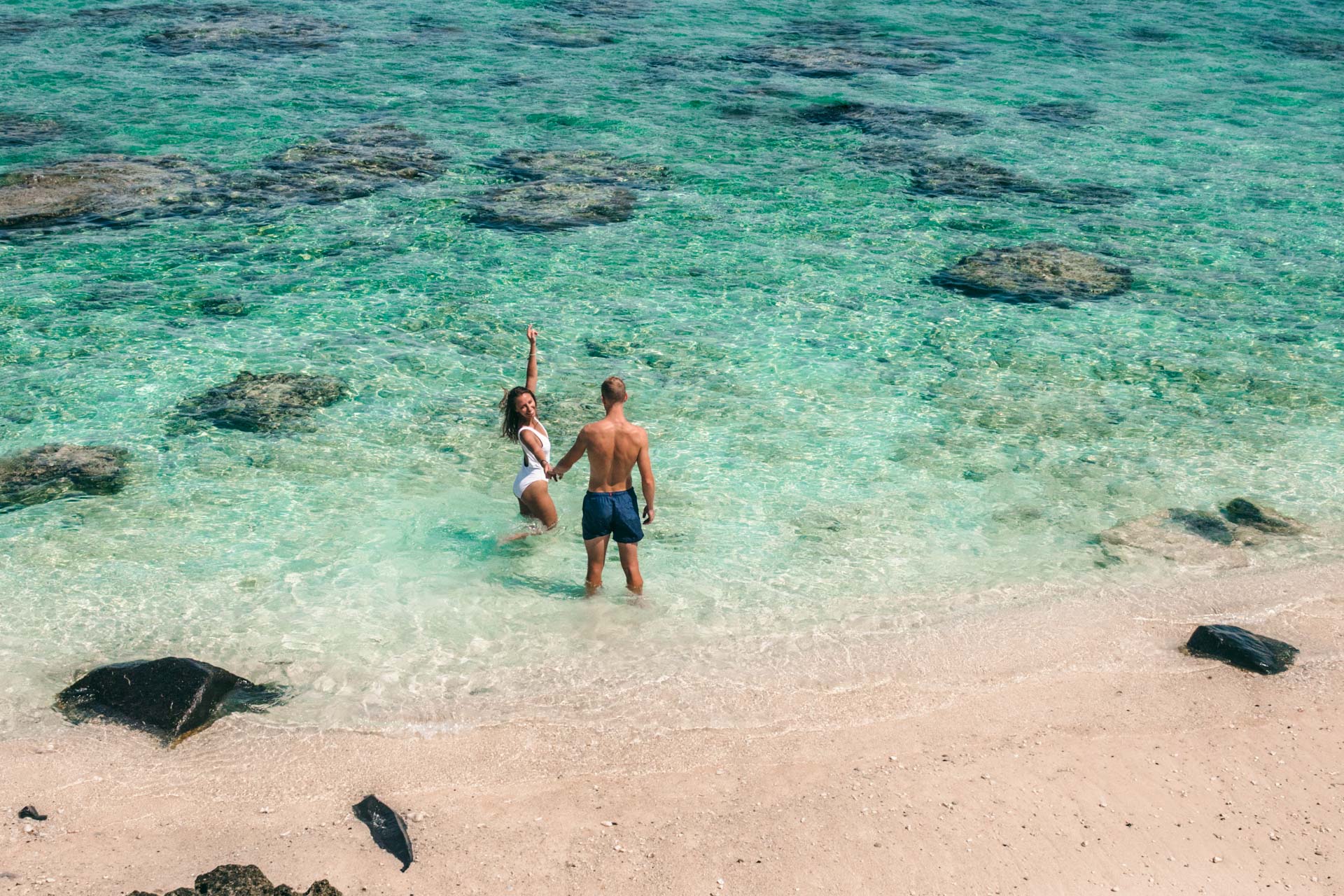

 Book cheap hotels
Book cheap hotels  Find the best flight deals
Find the best flight deals  Nomad insurance
Nomad insurance  Our Camera Gear
Our Camera Gear Our Packing List
Our Packing List
Thank you for the very useful information!